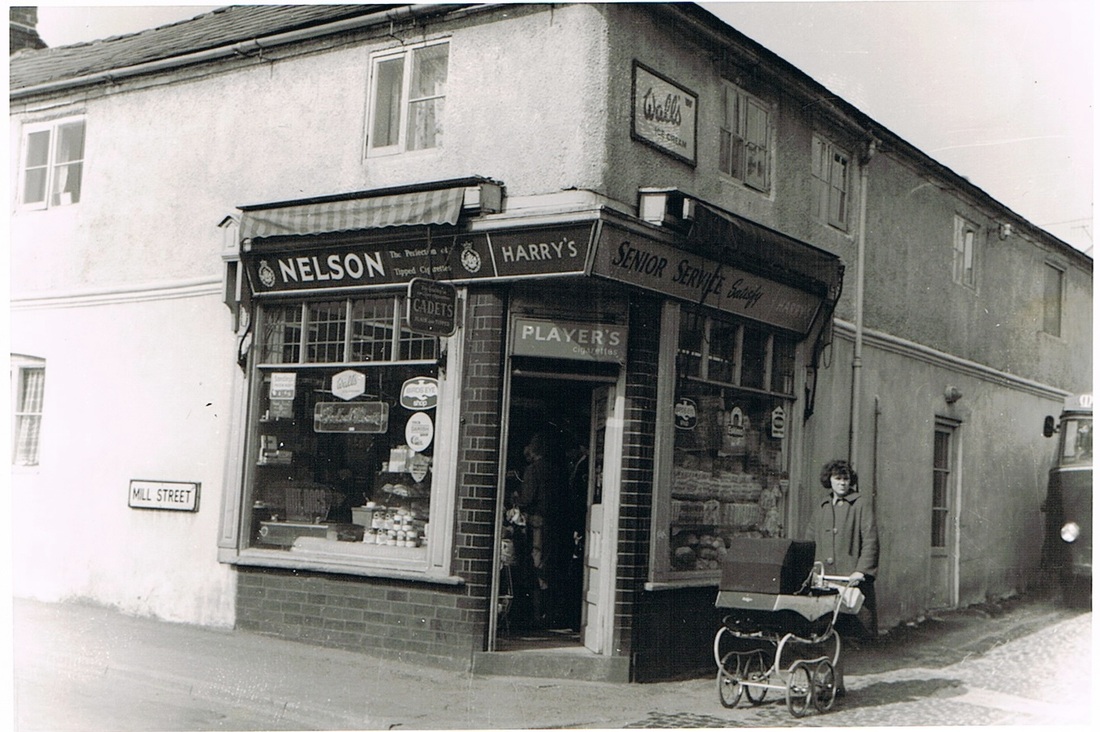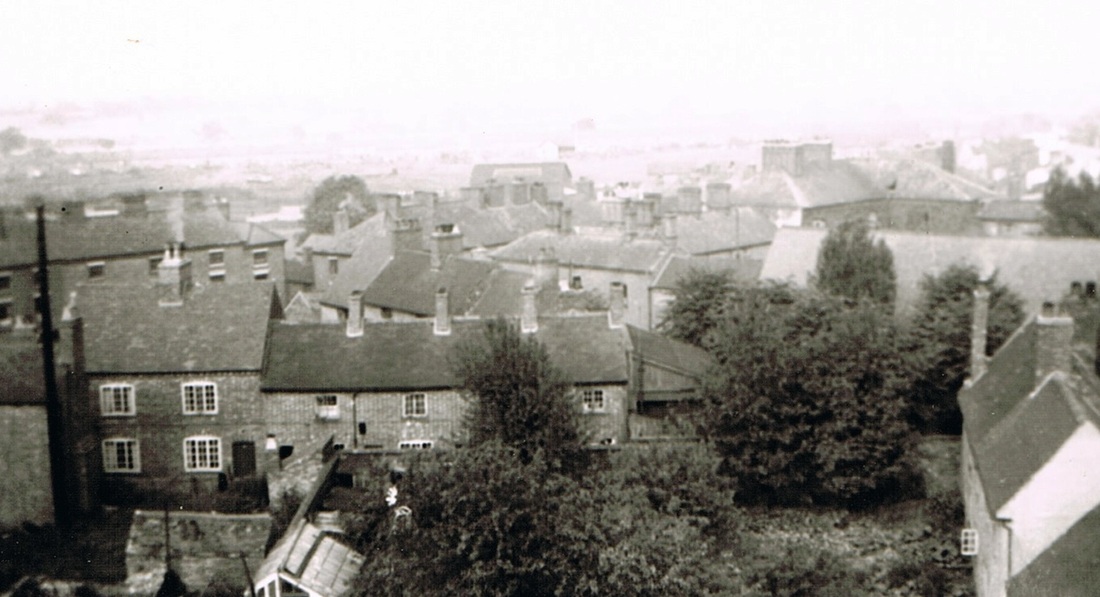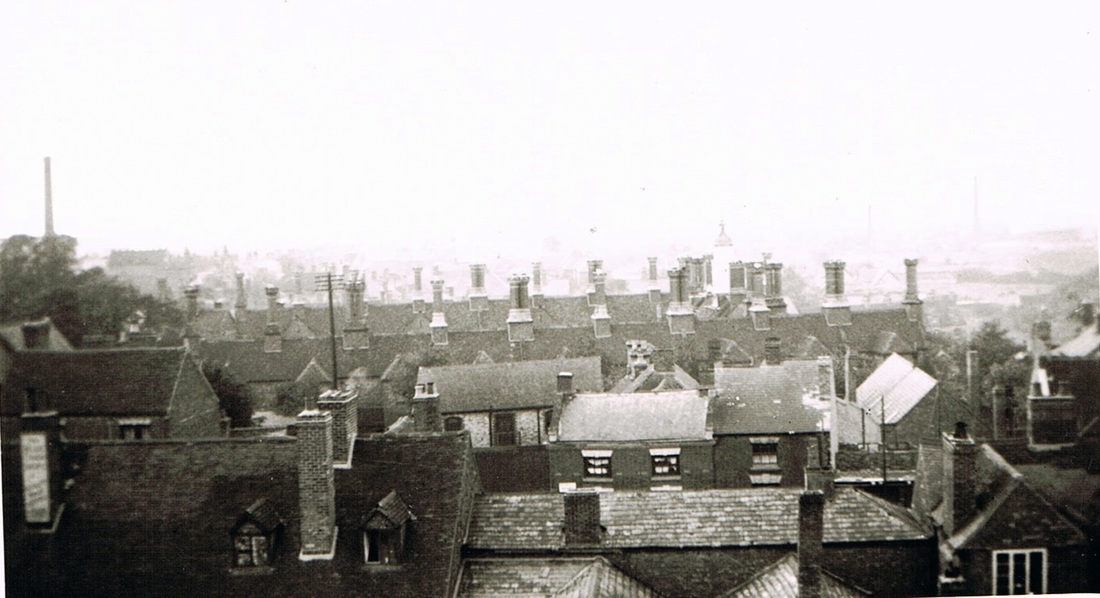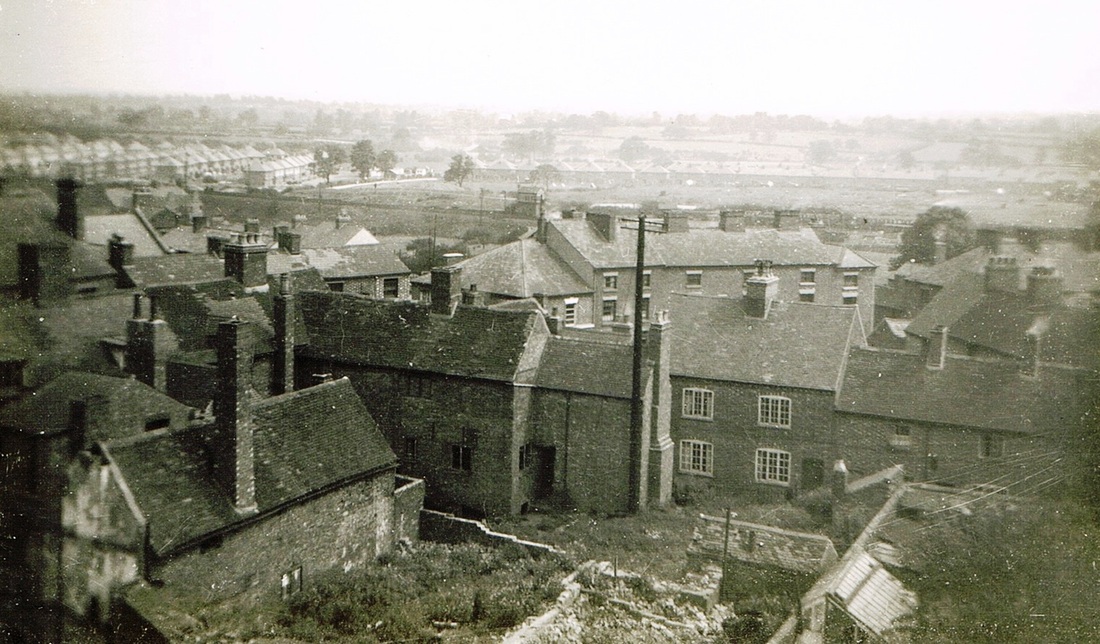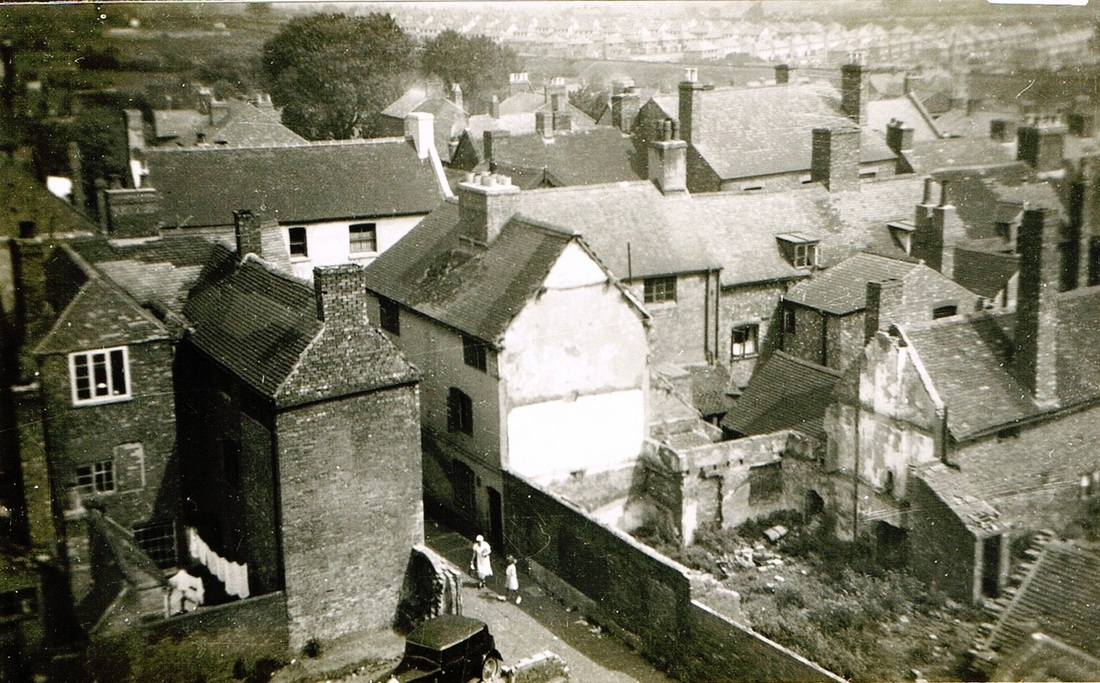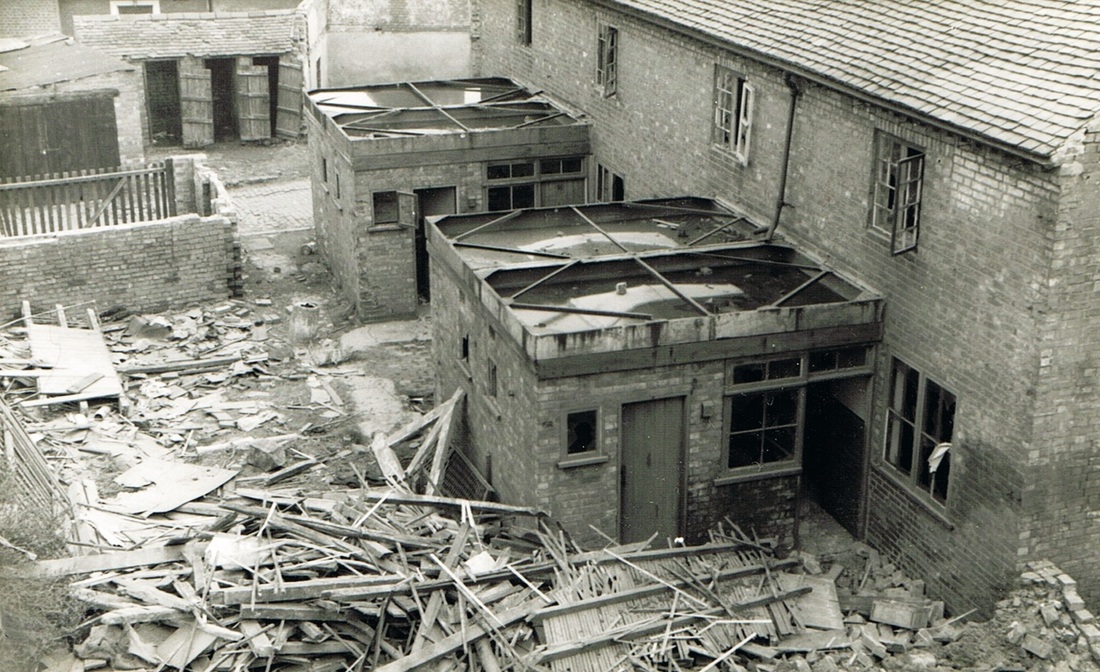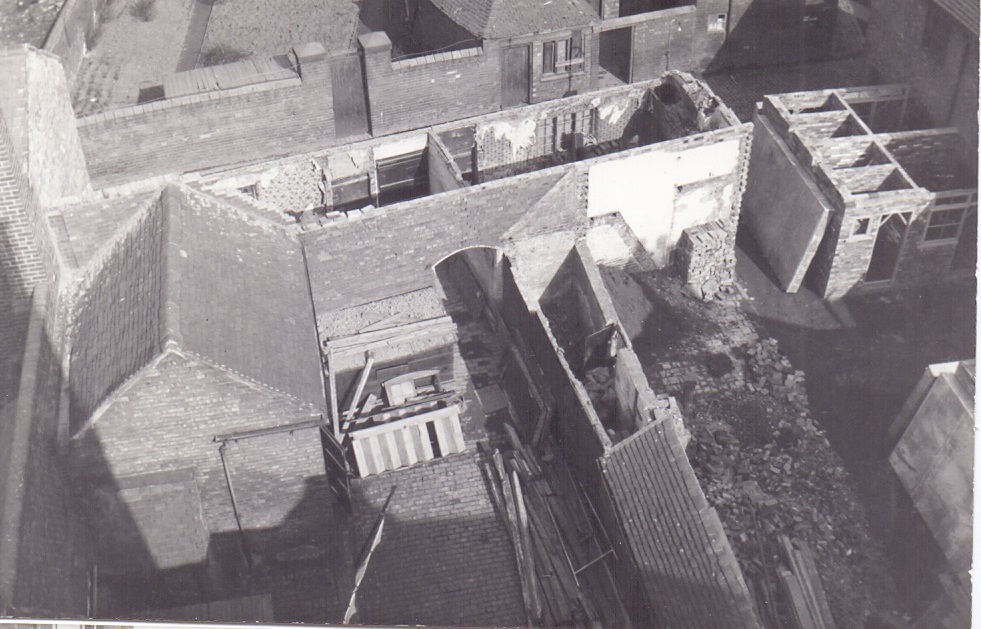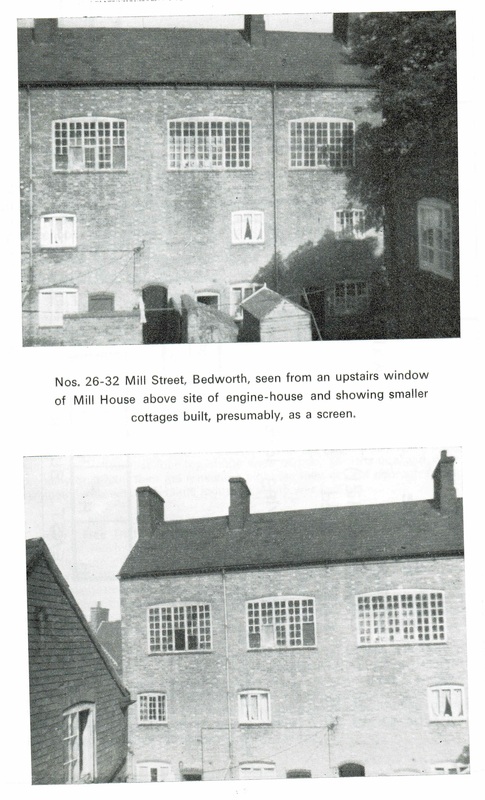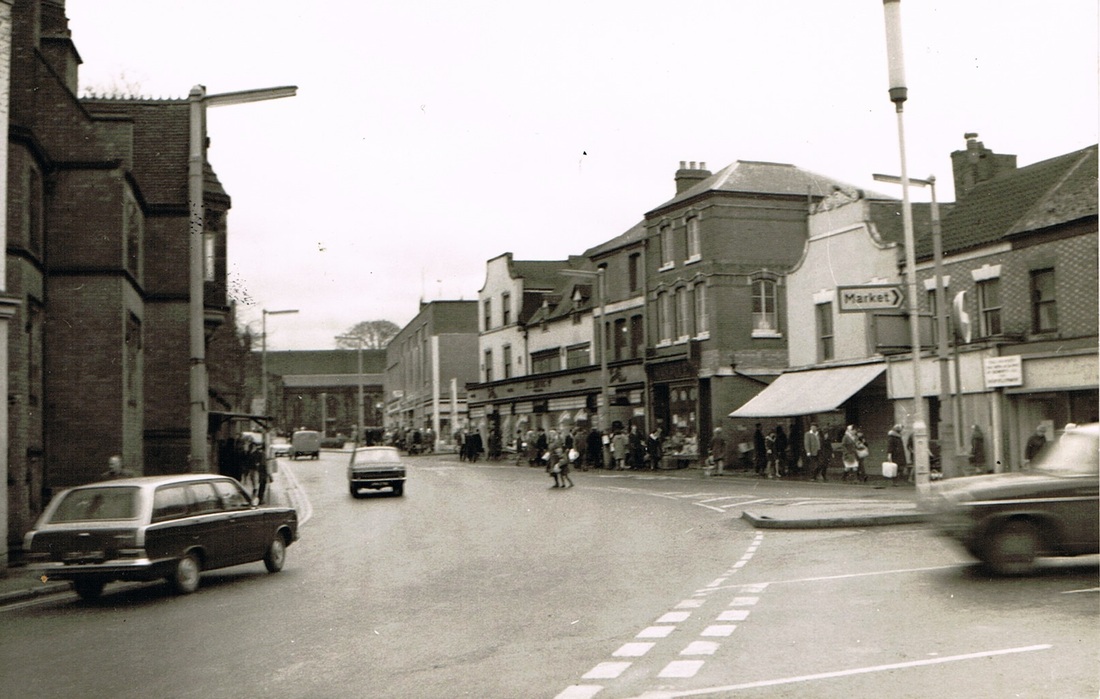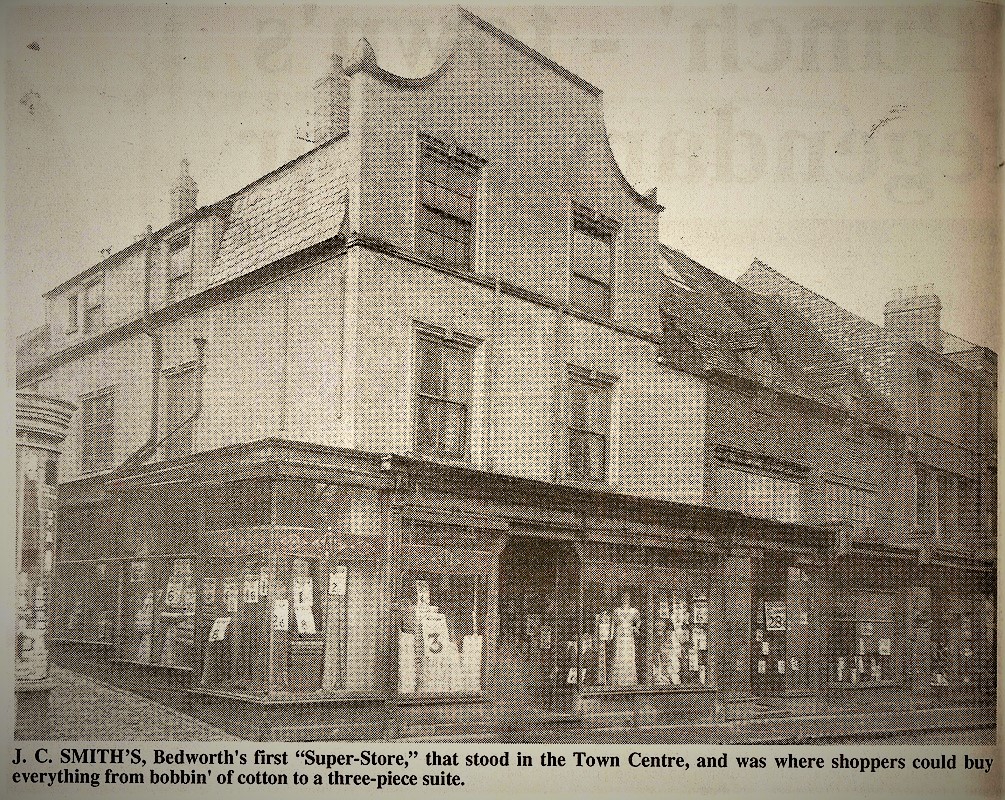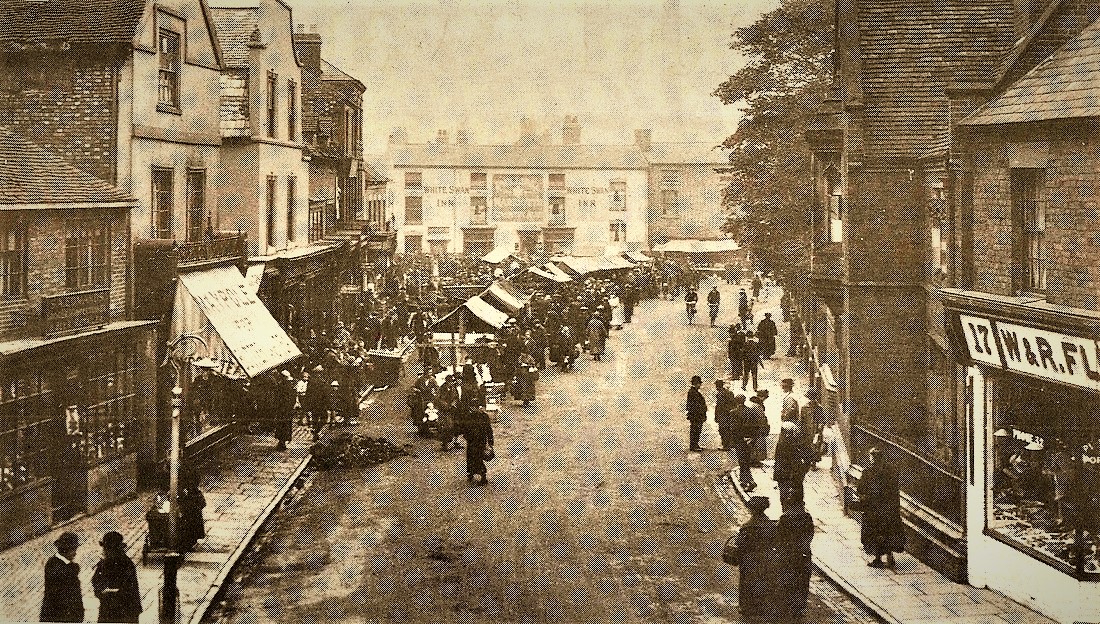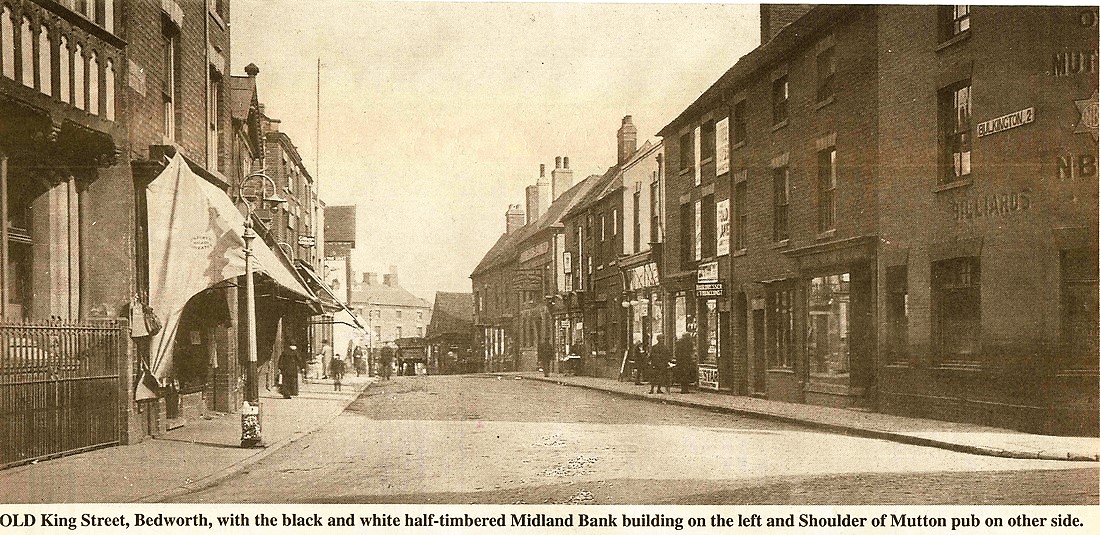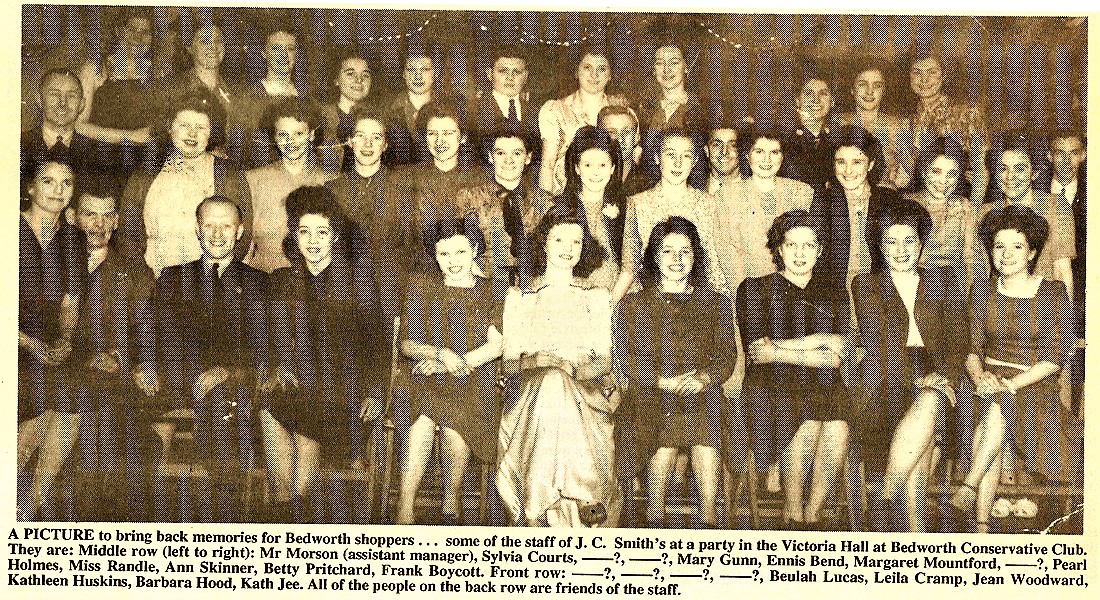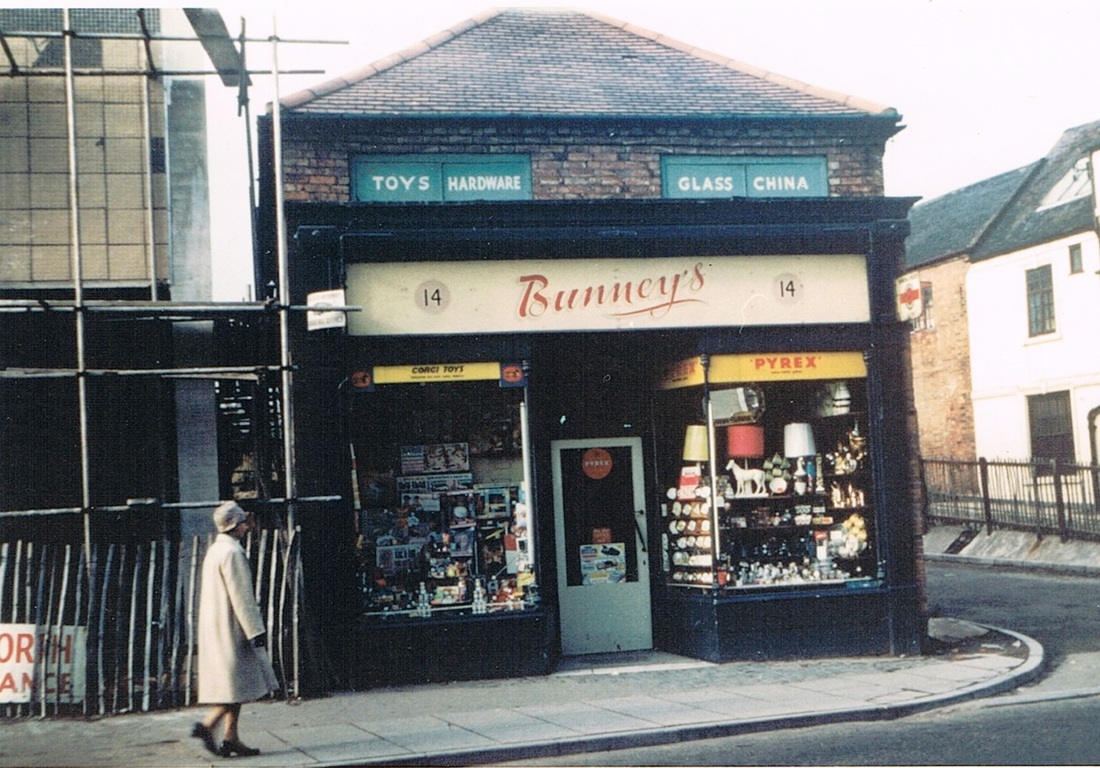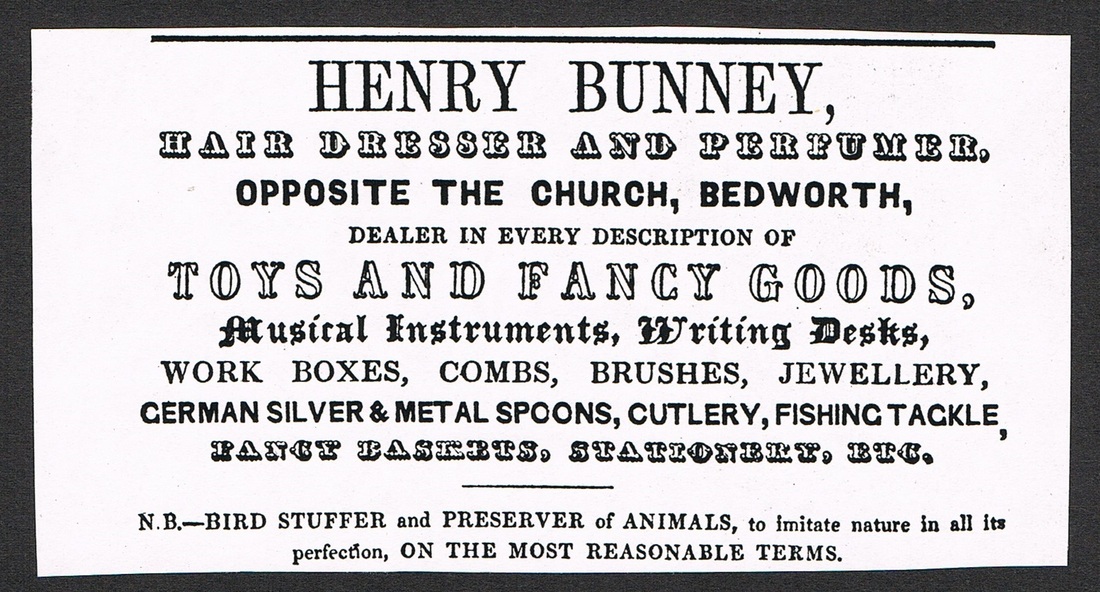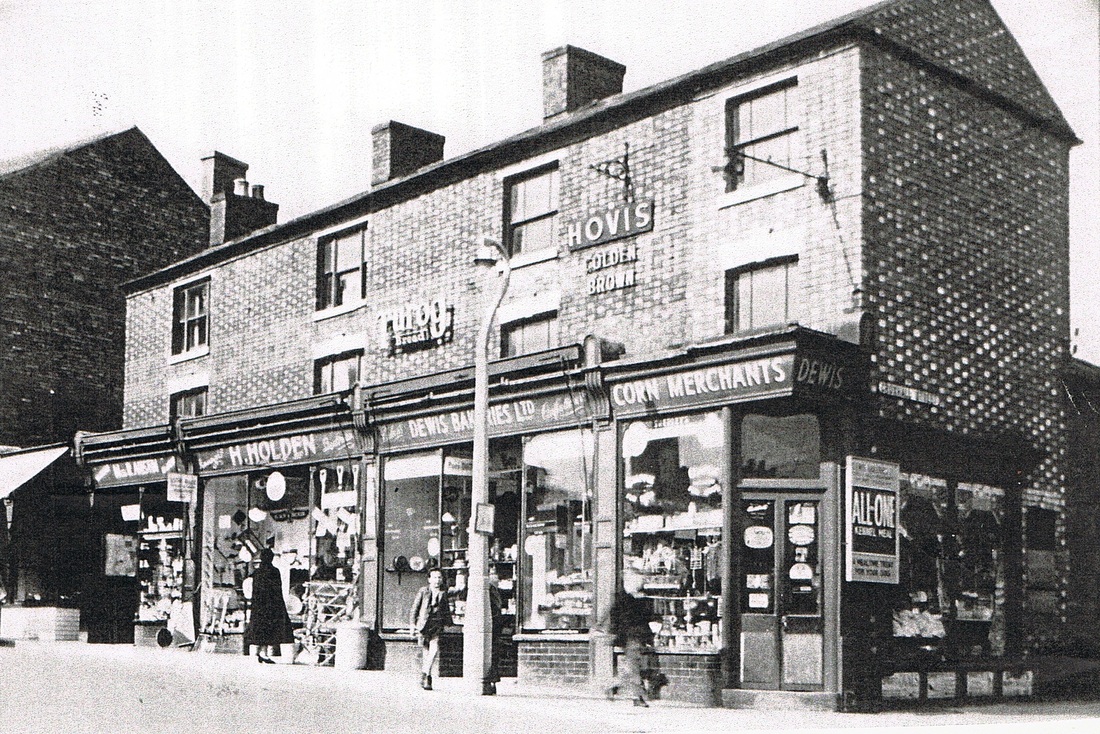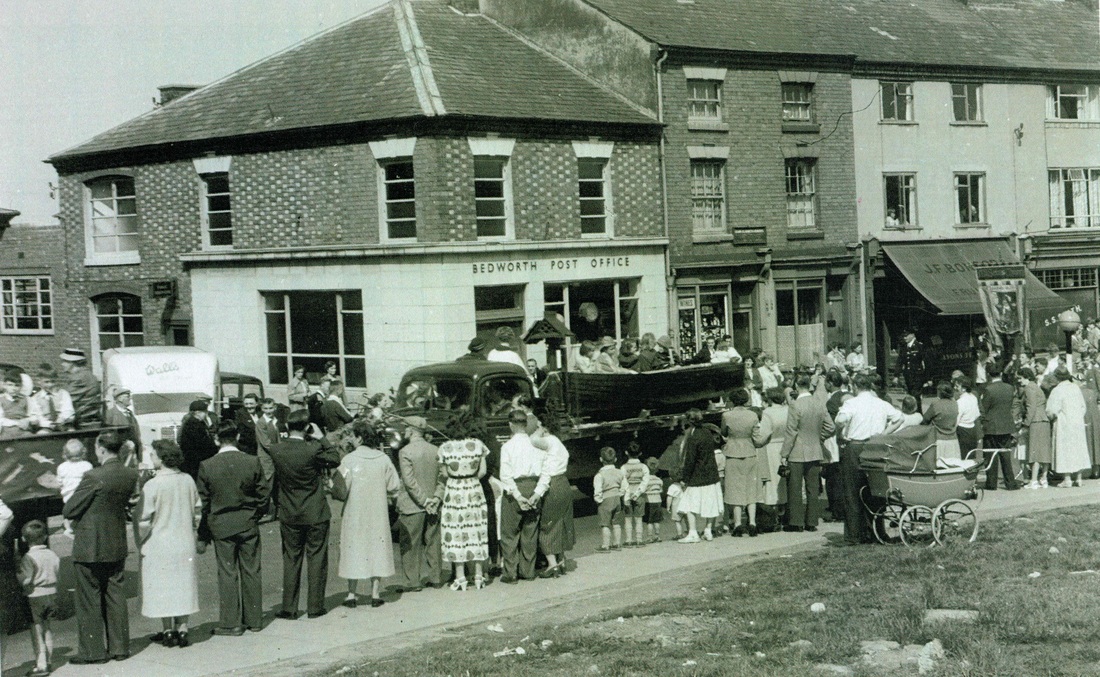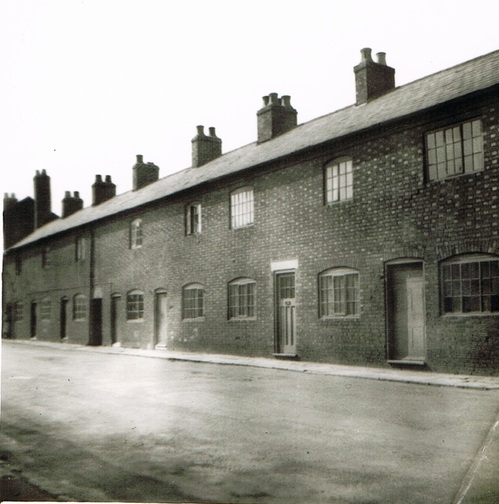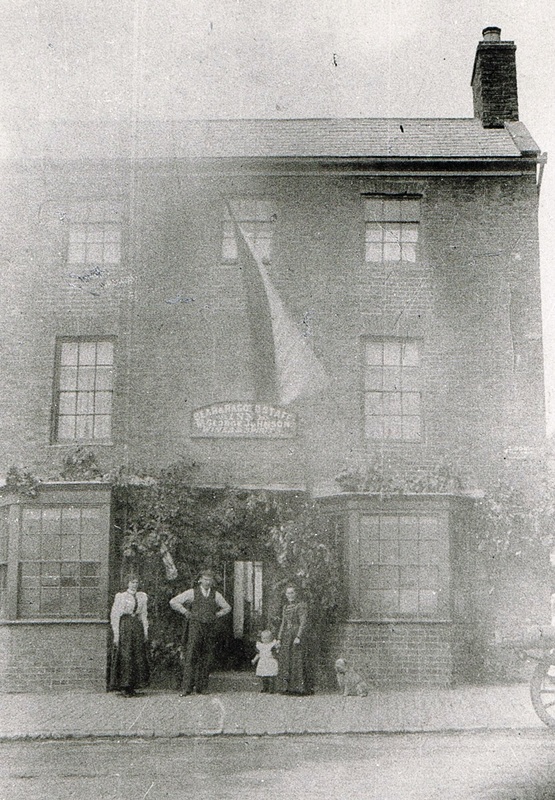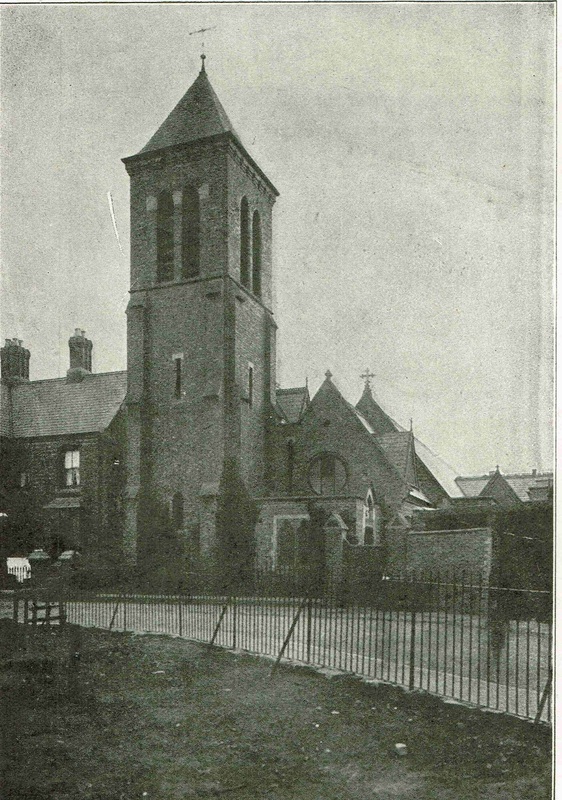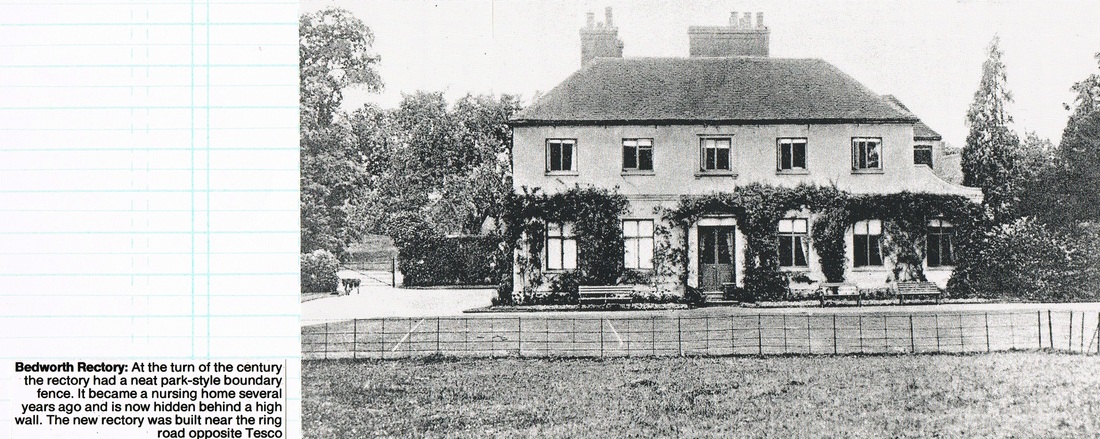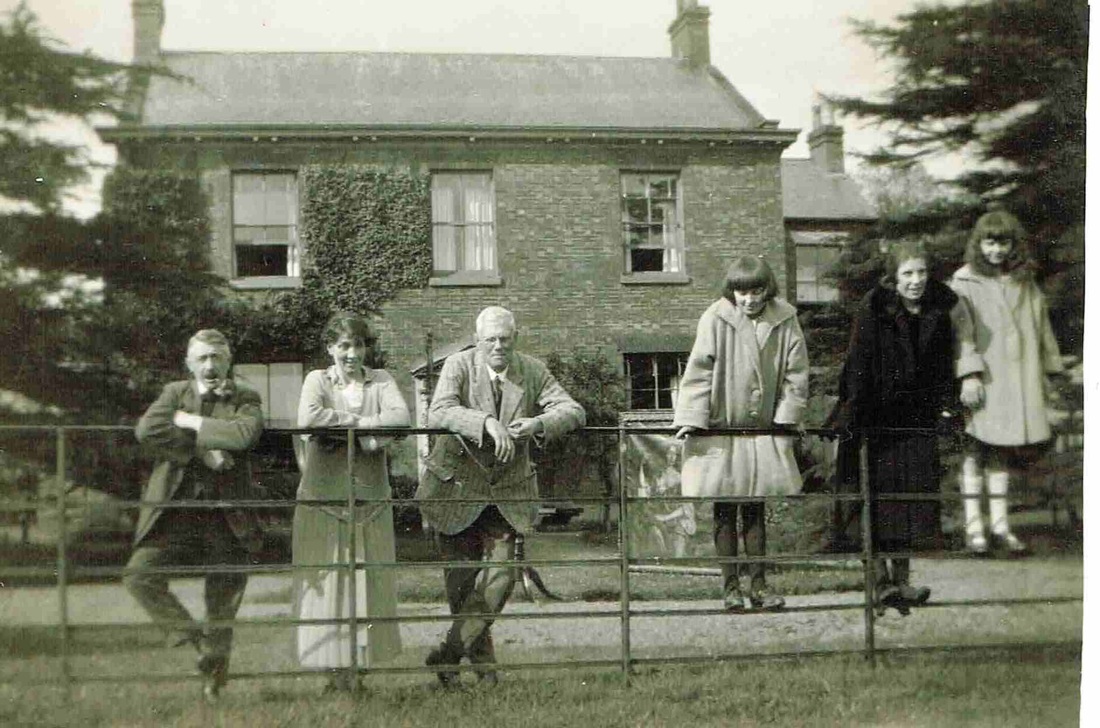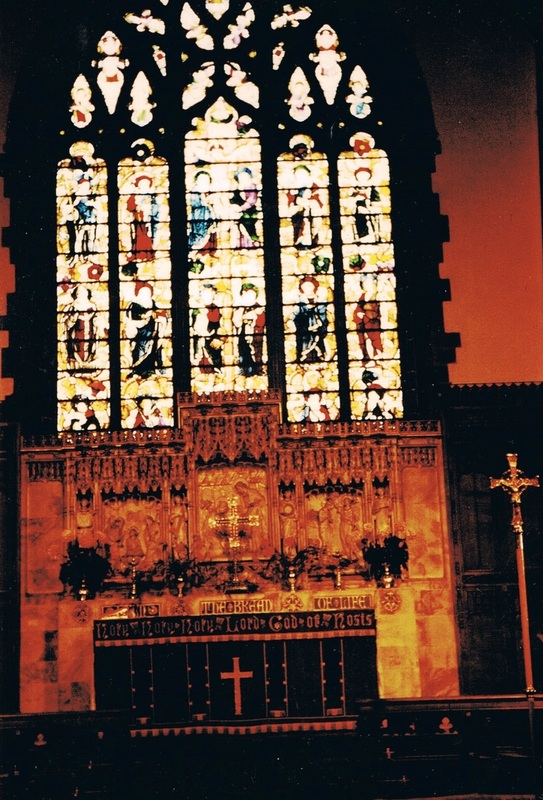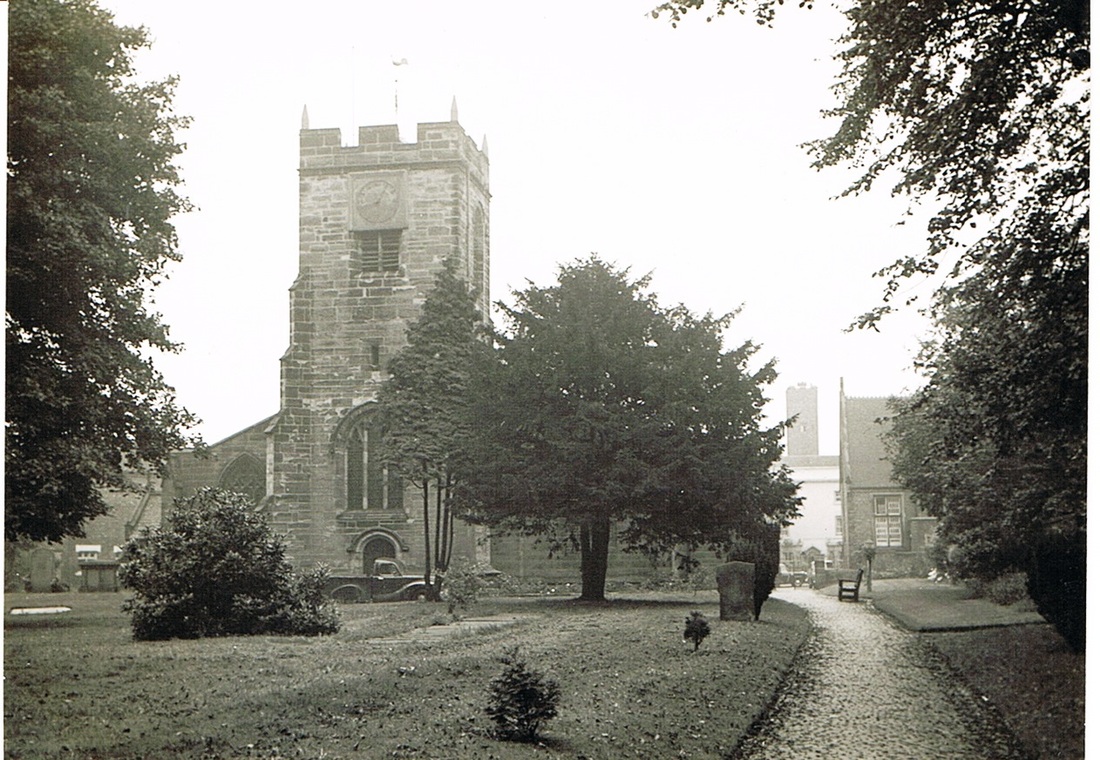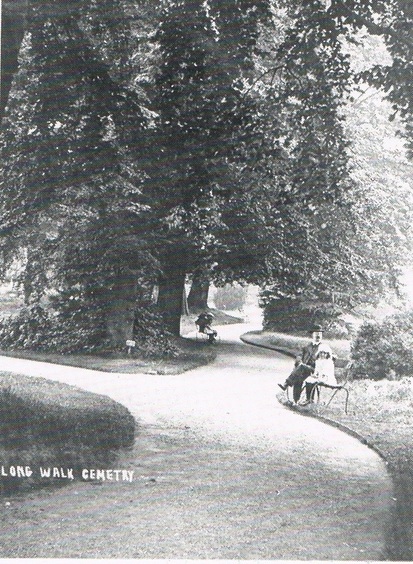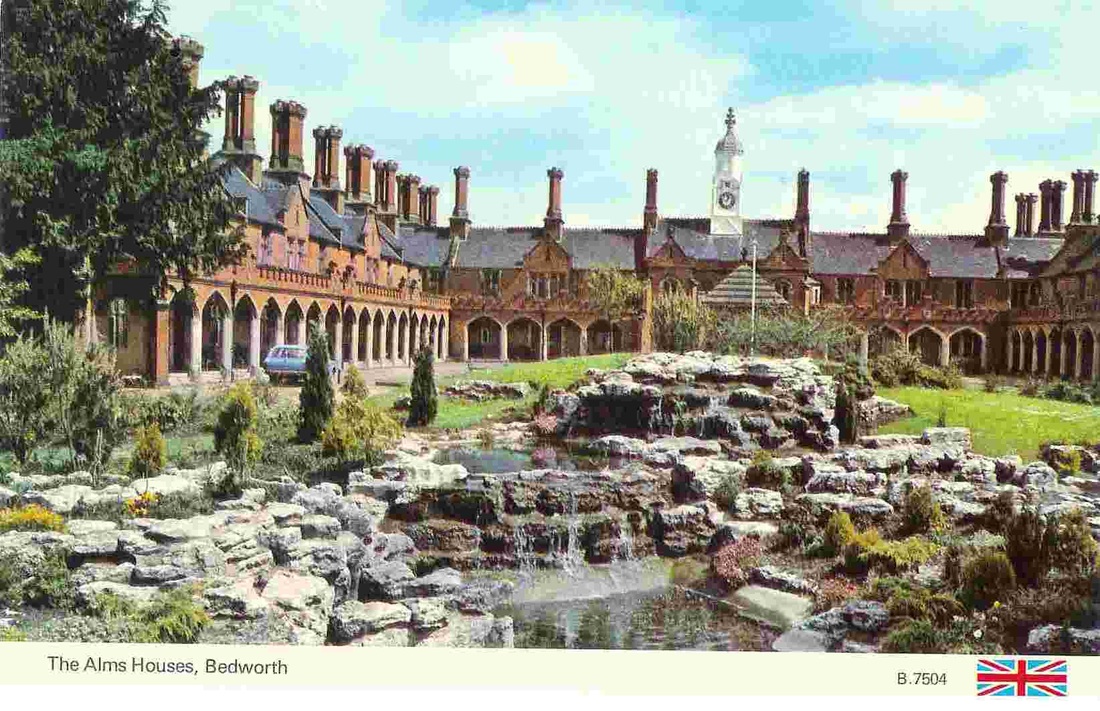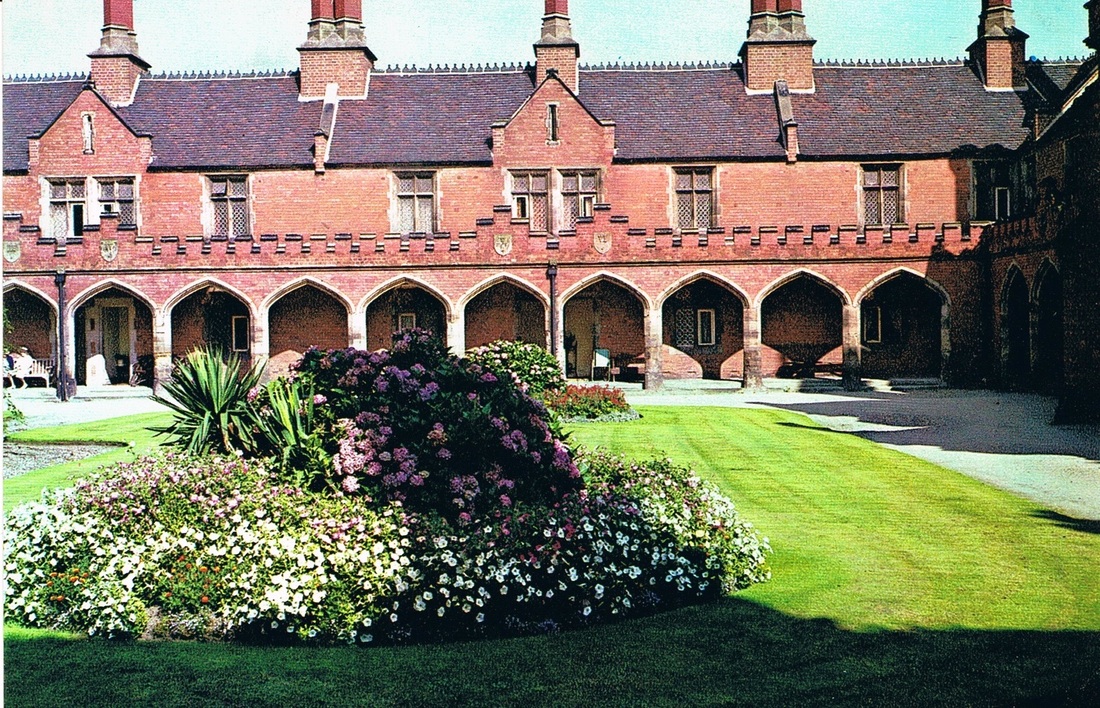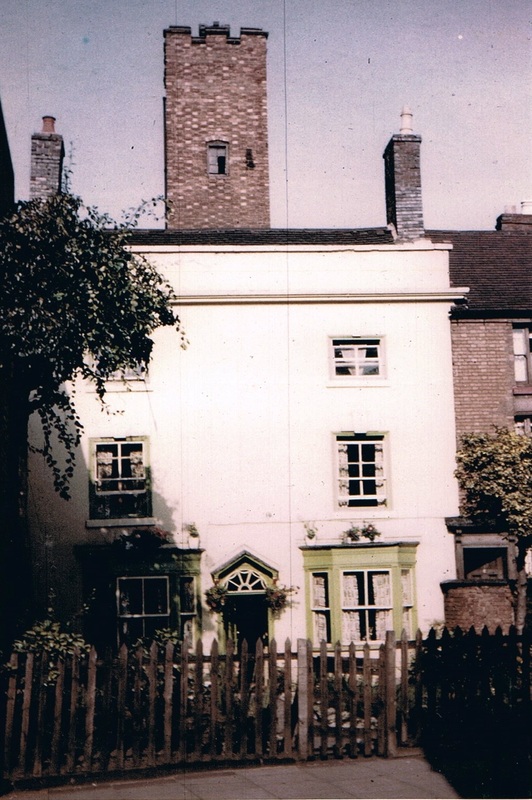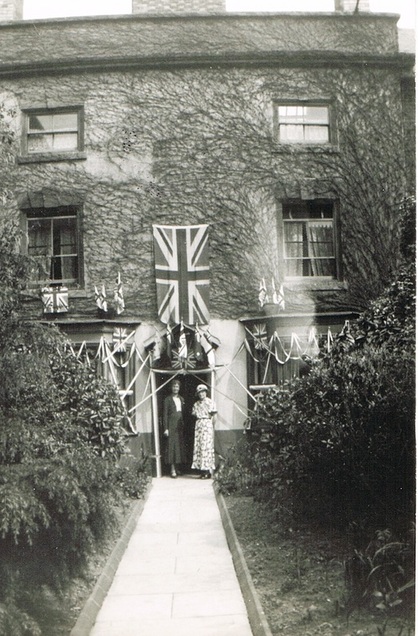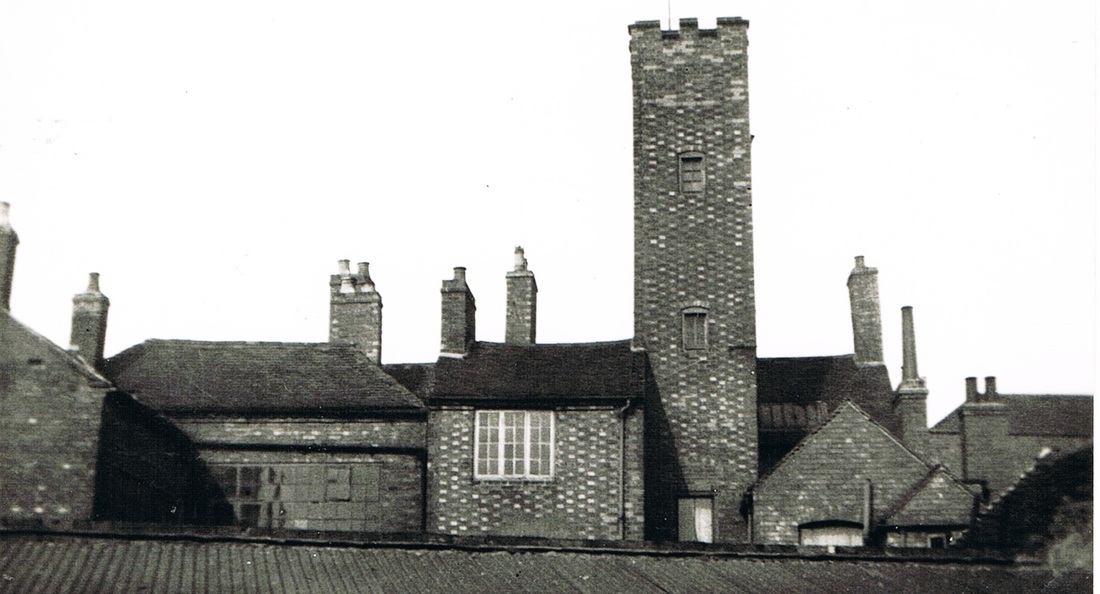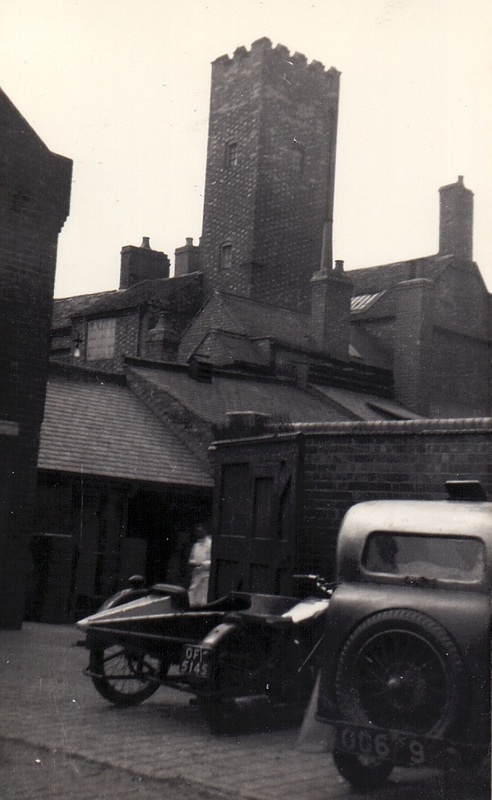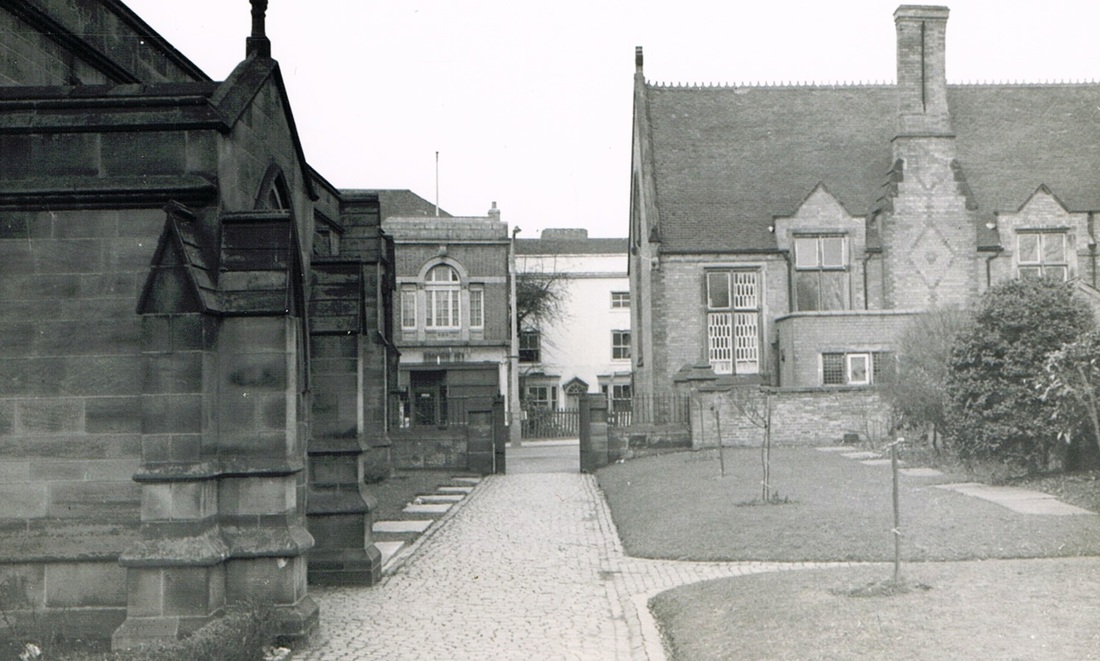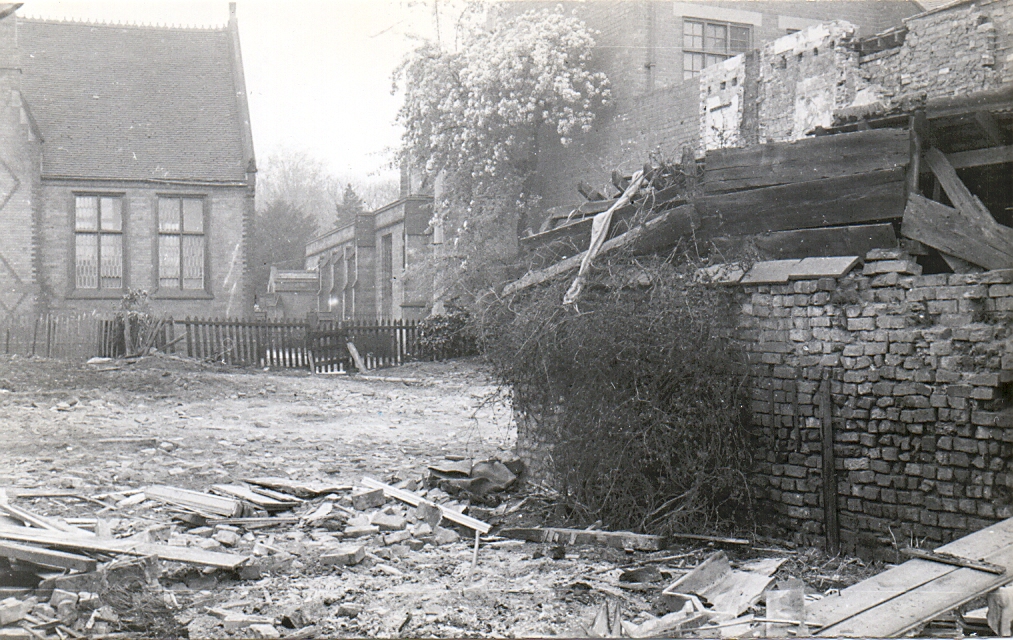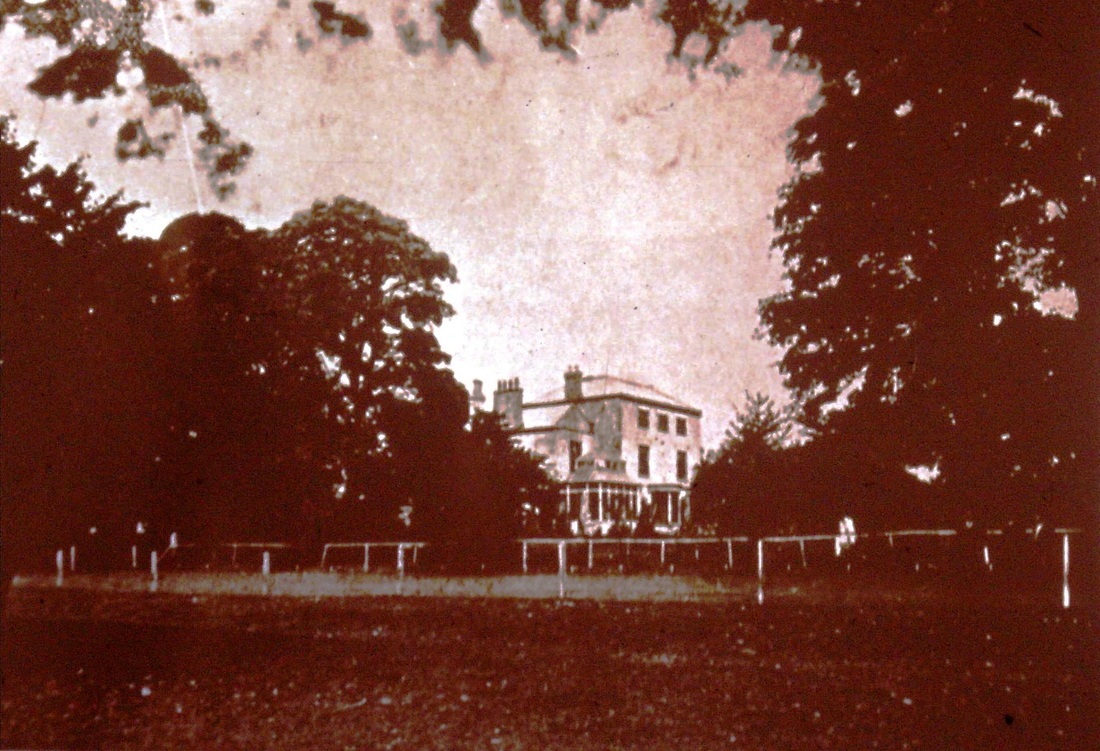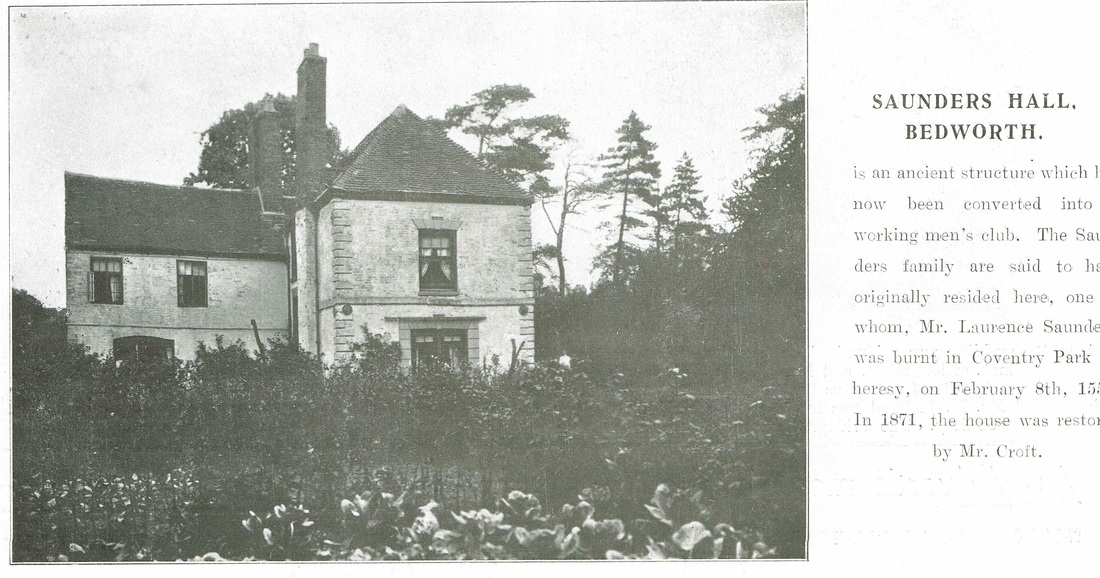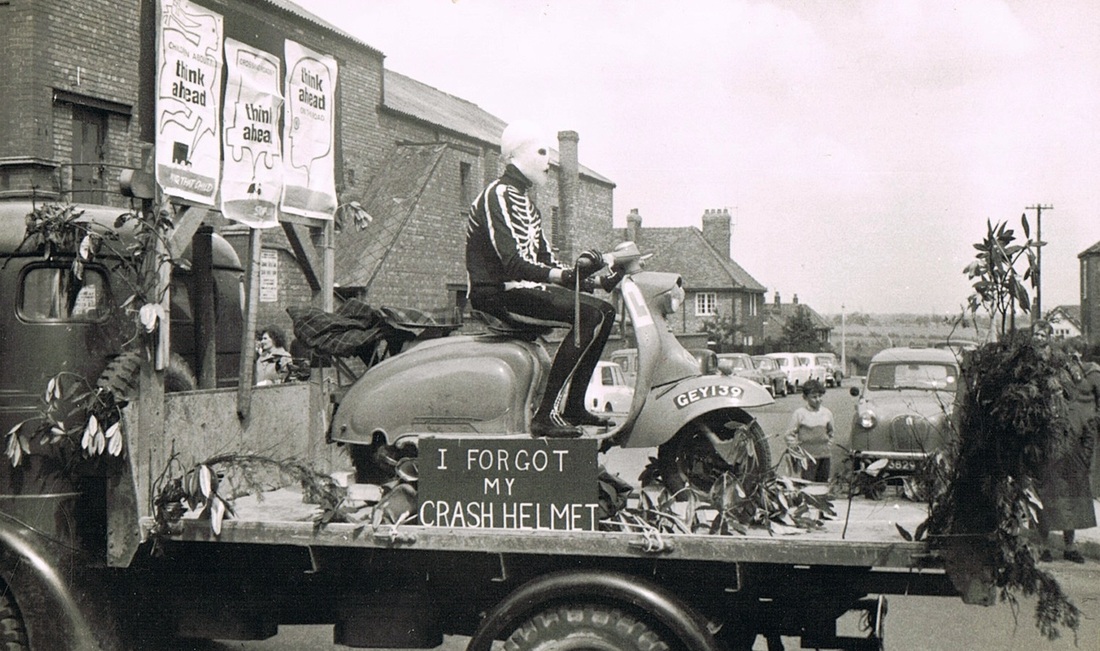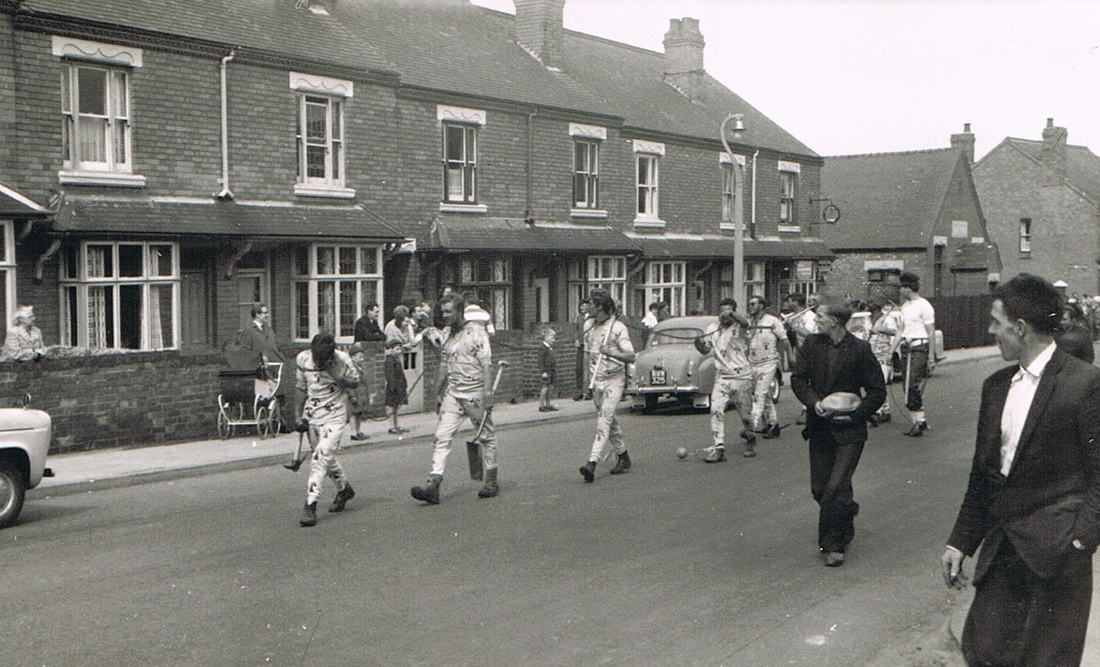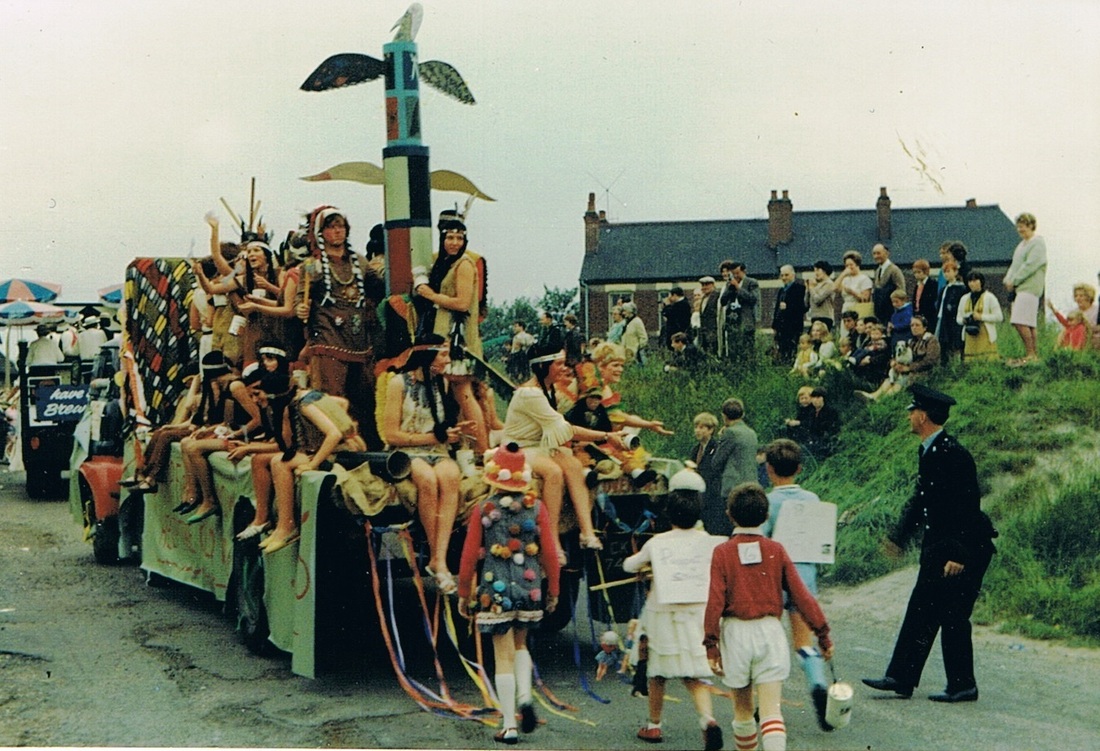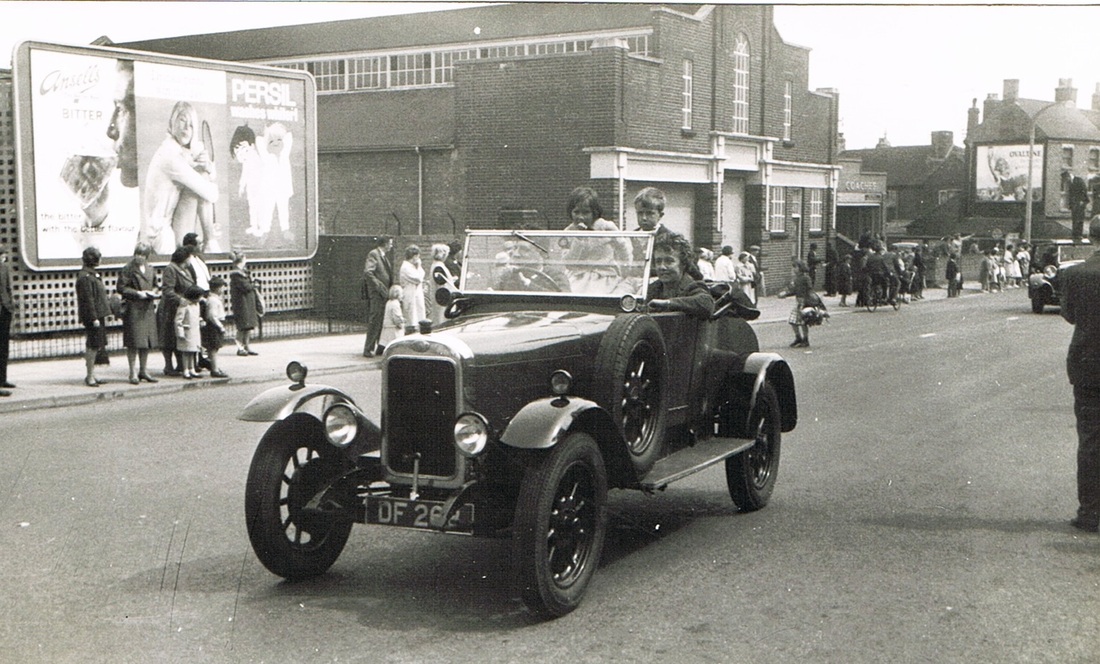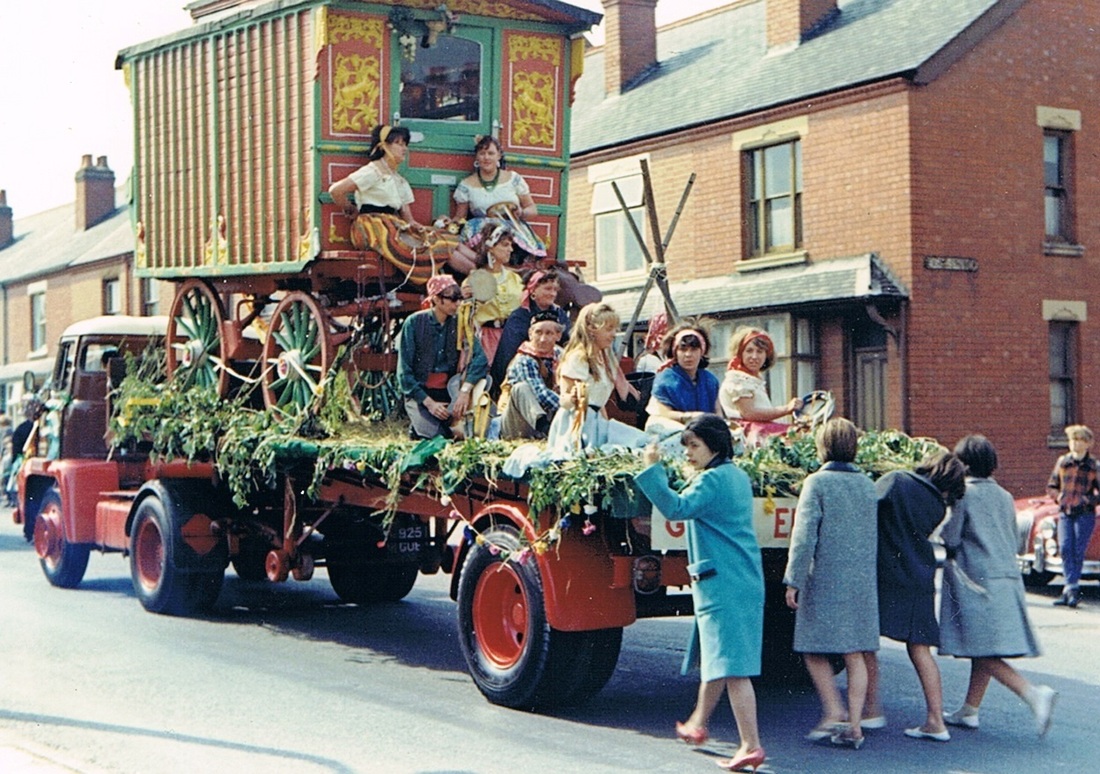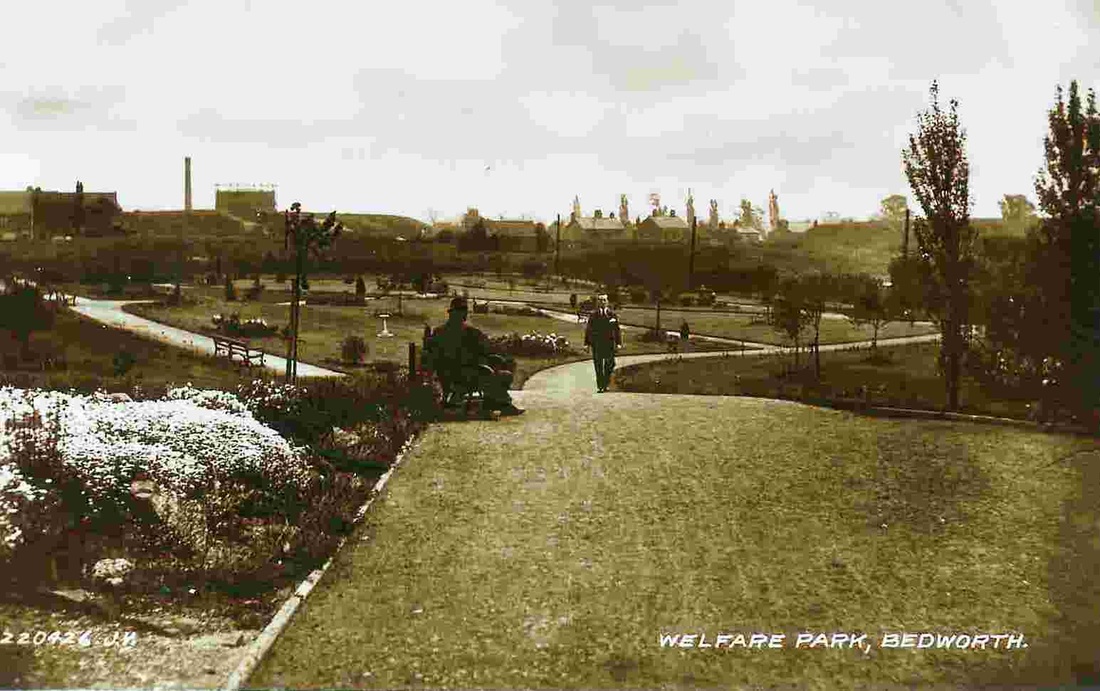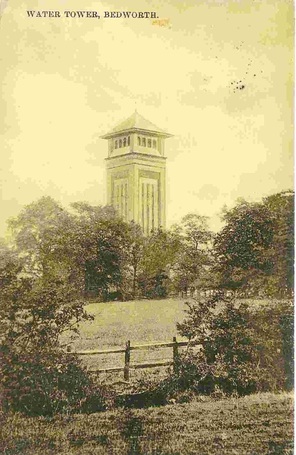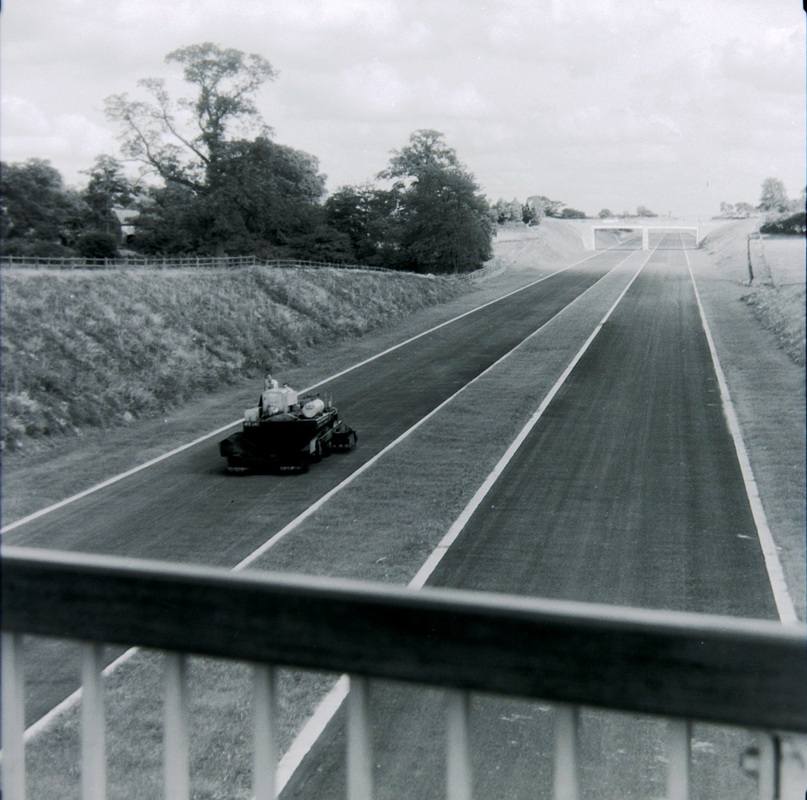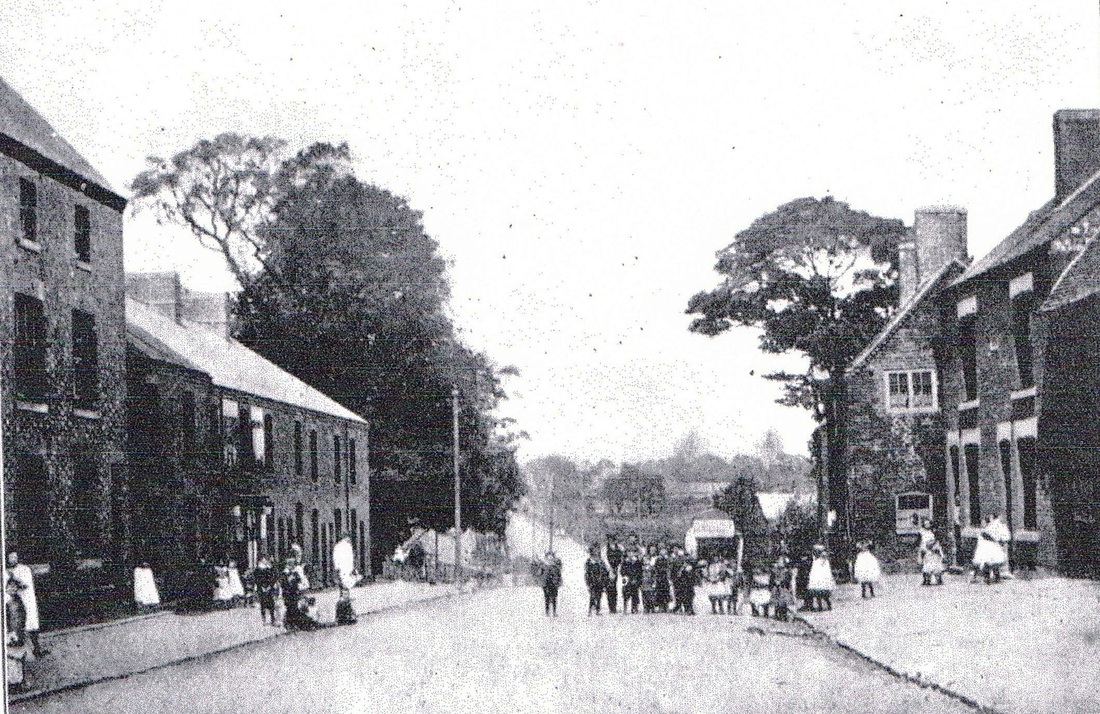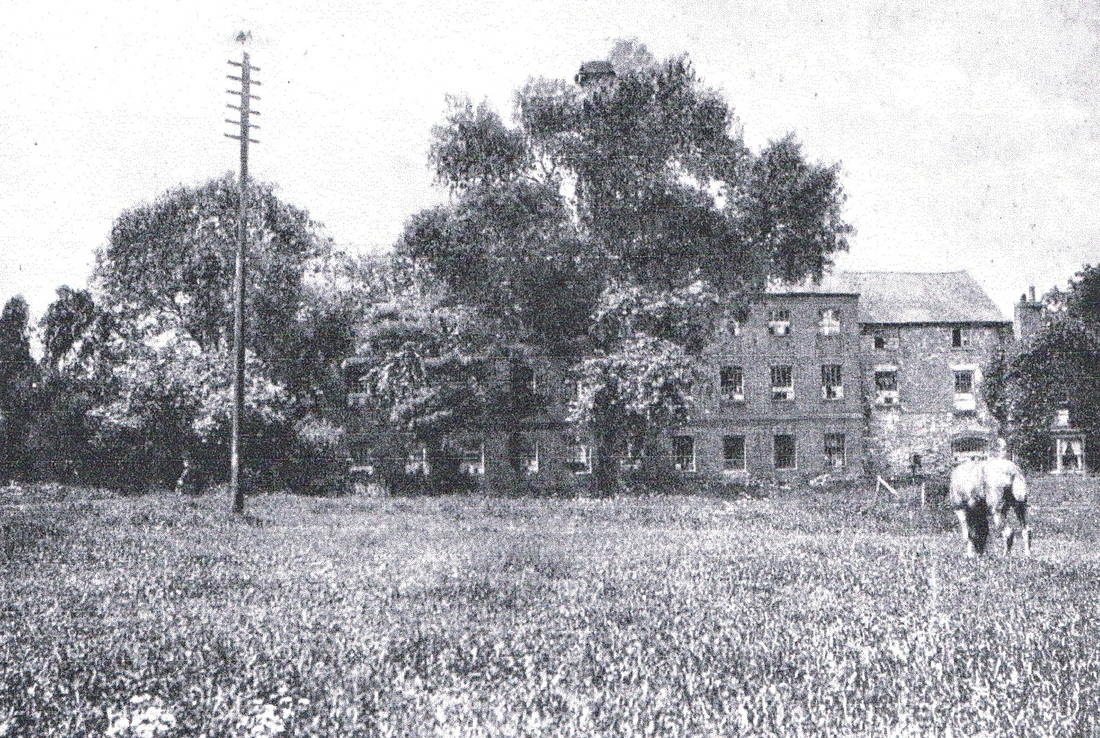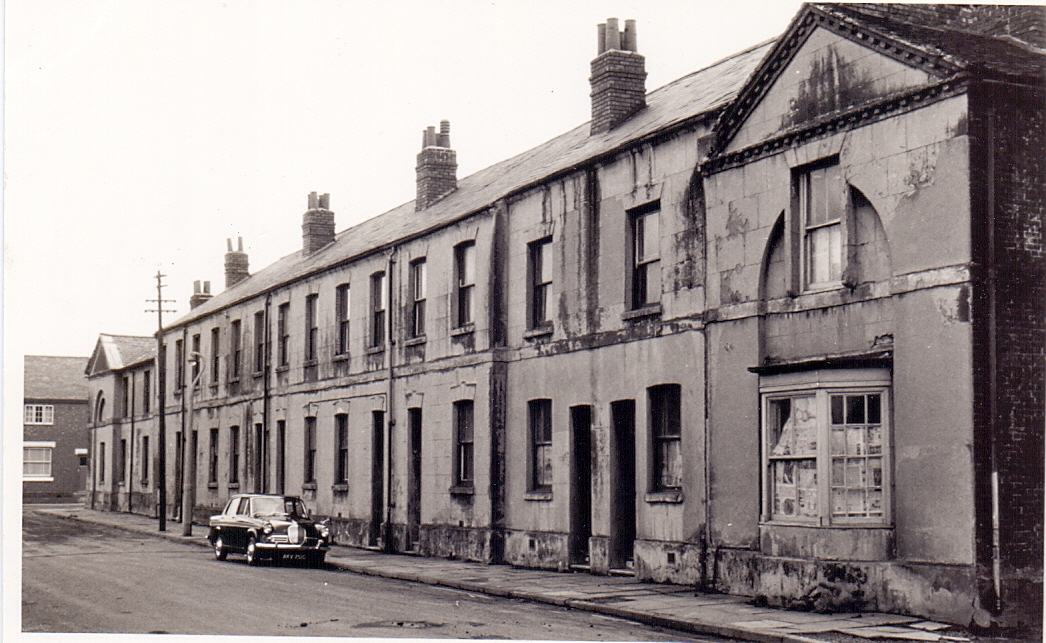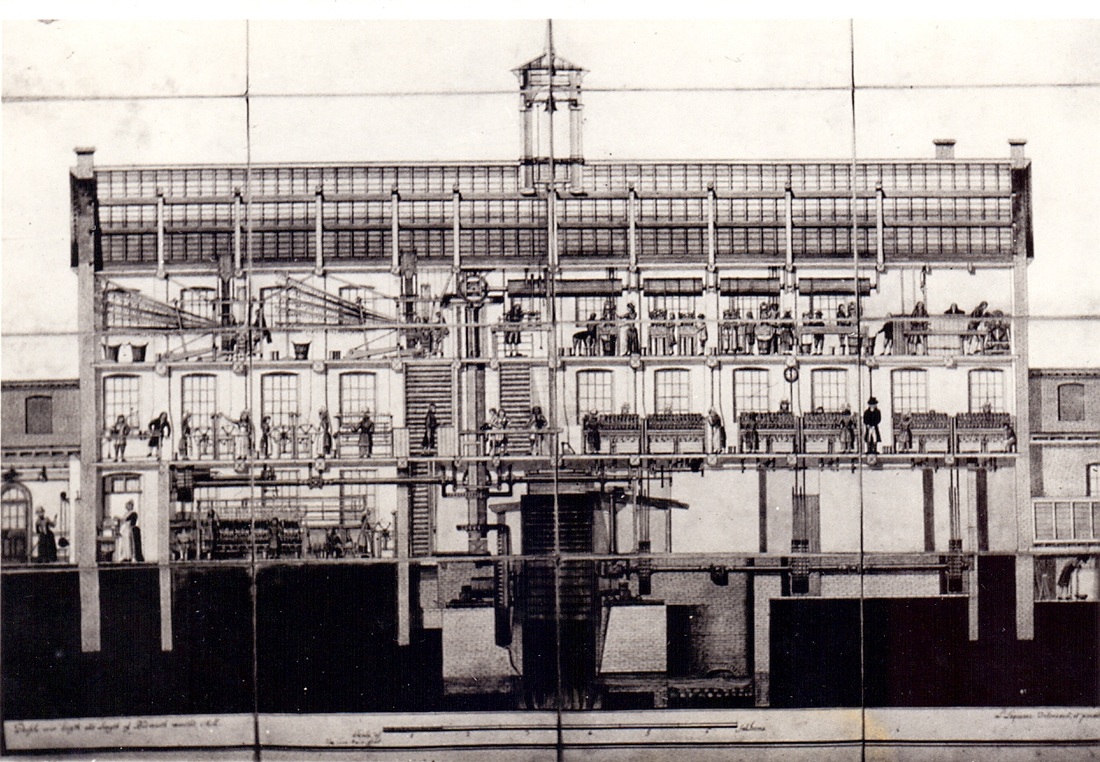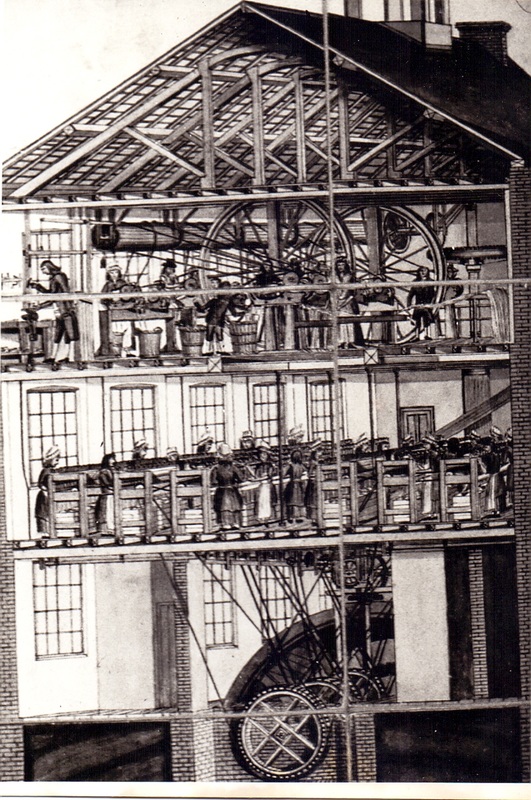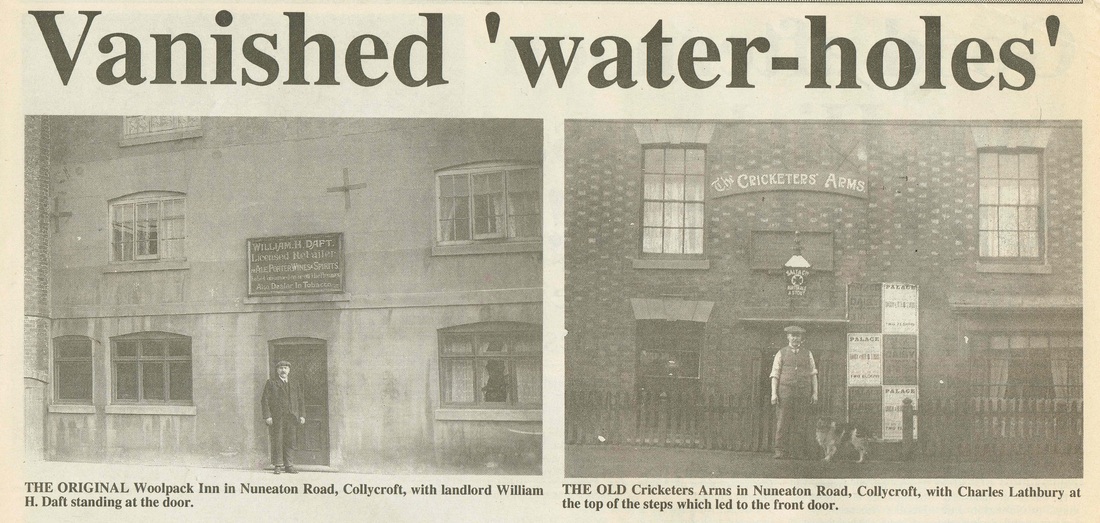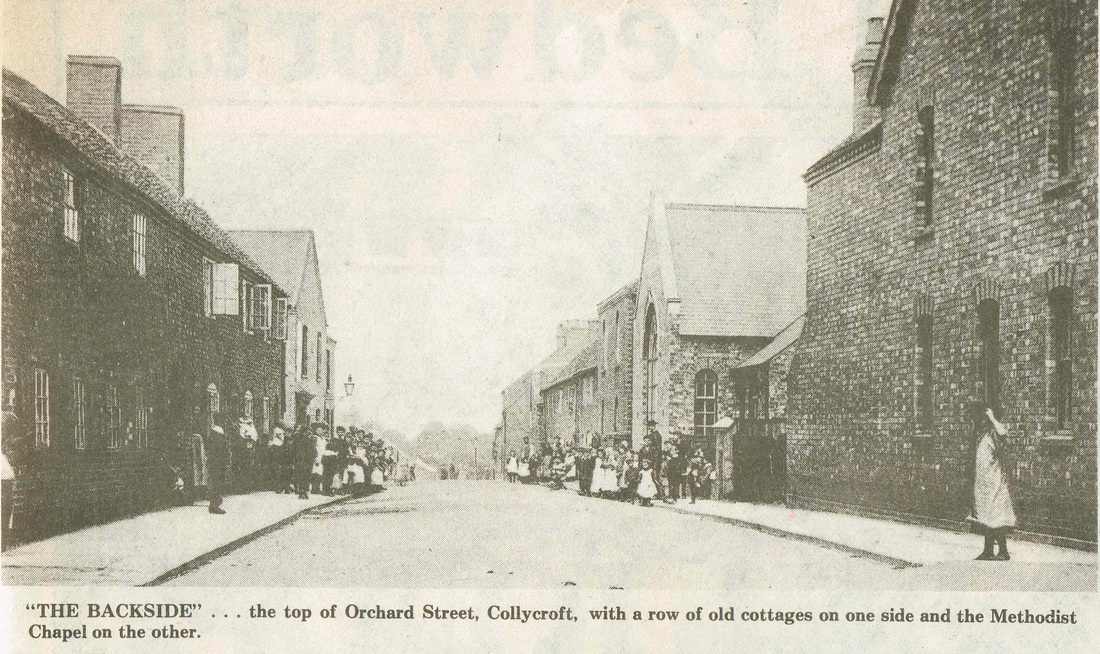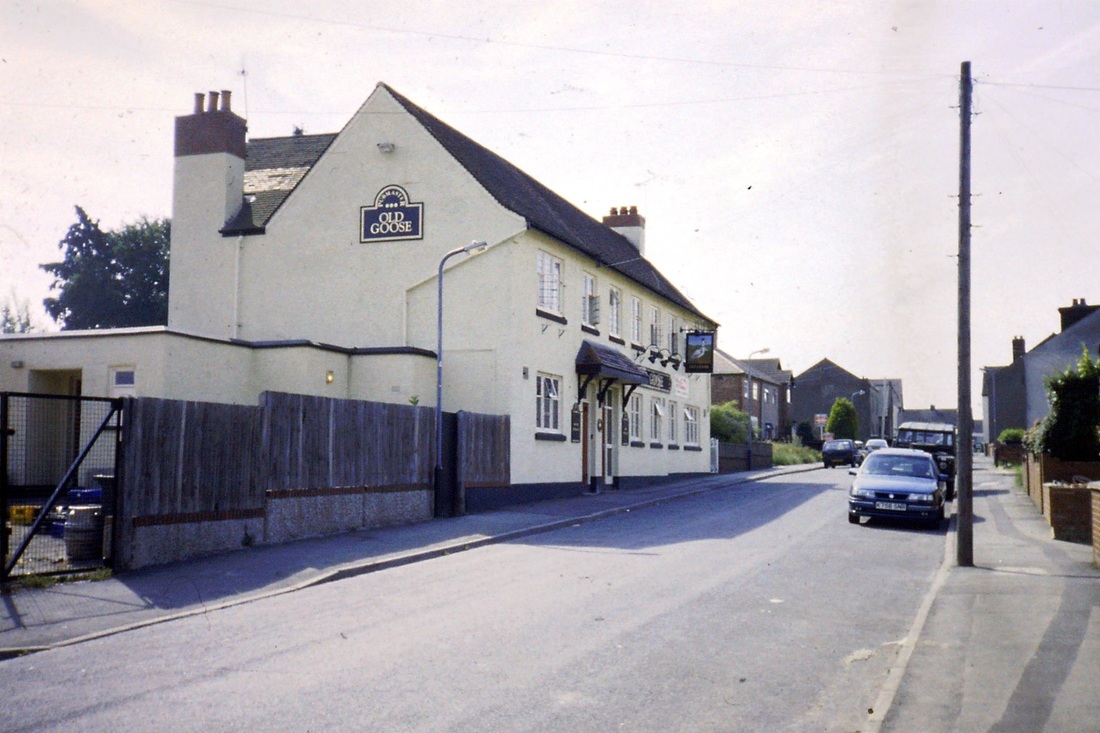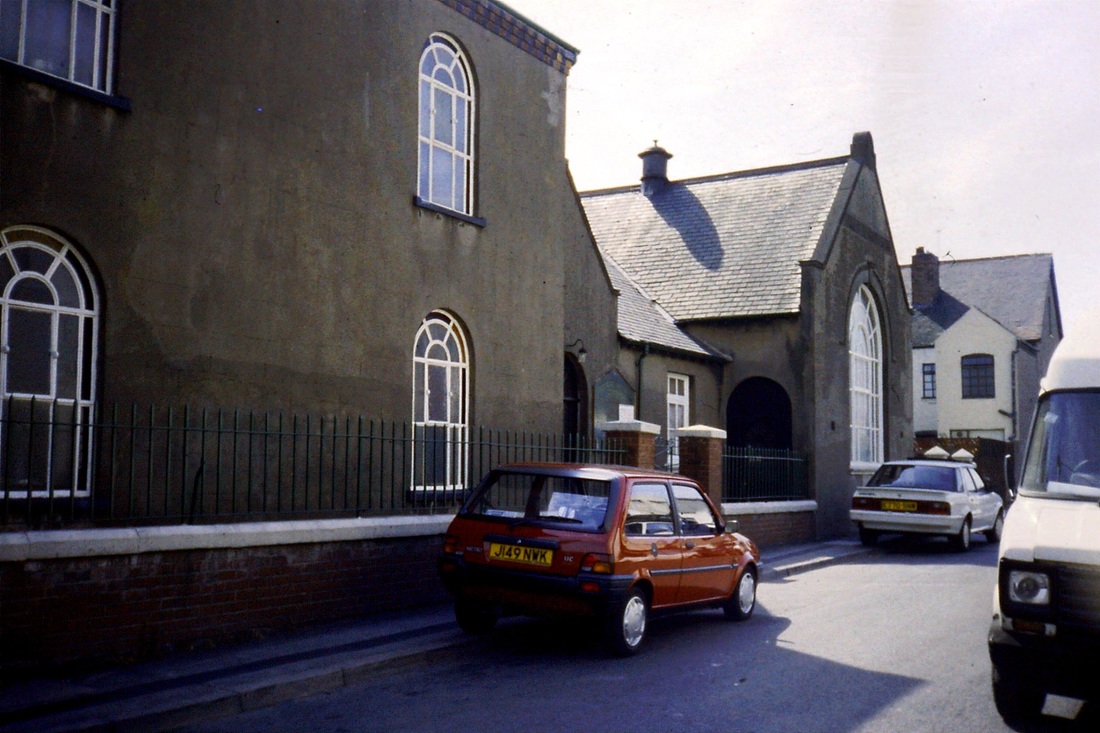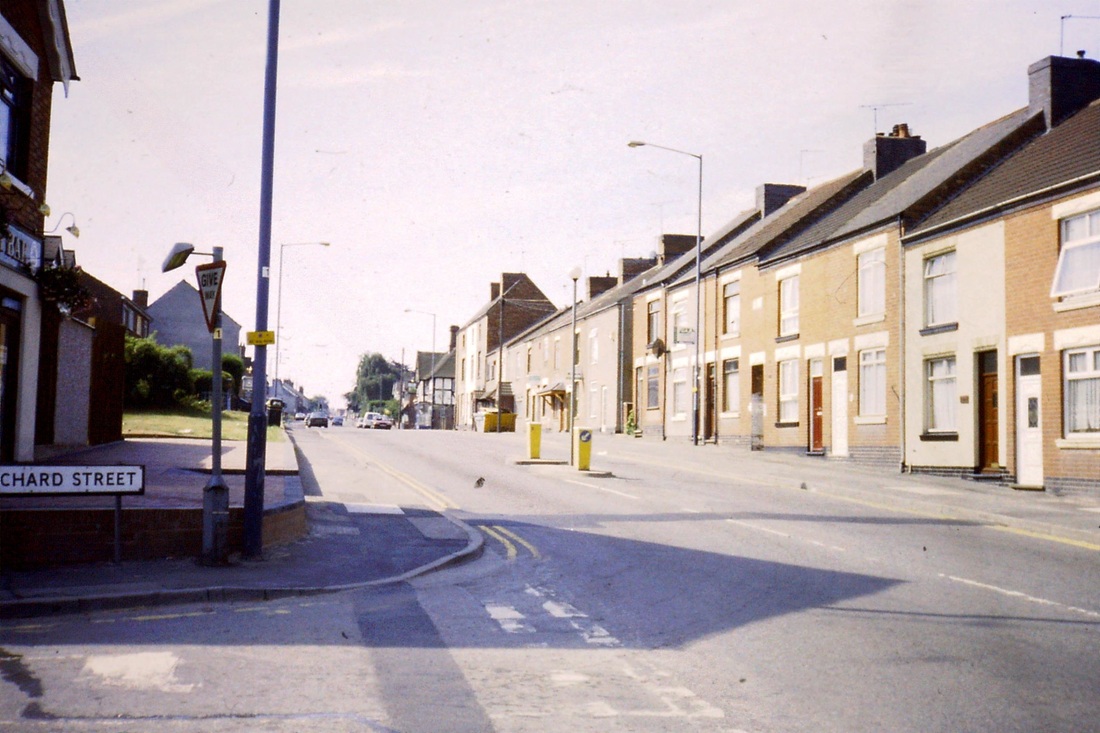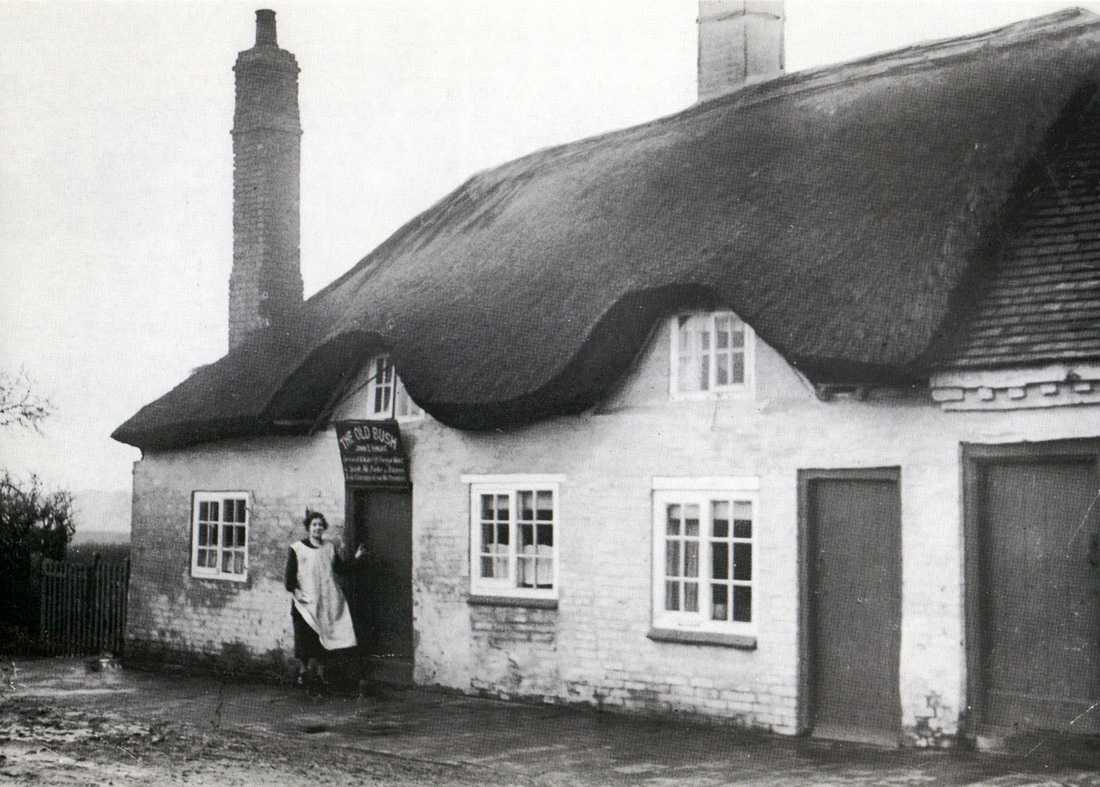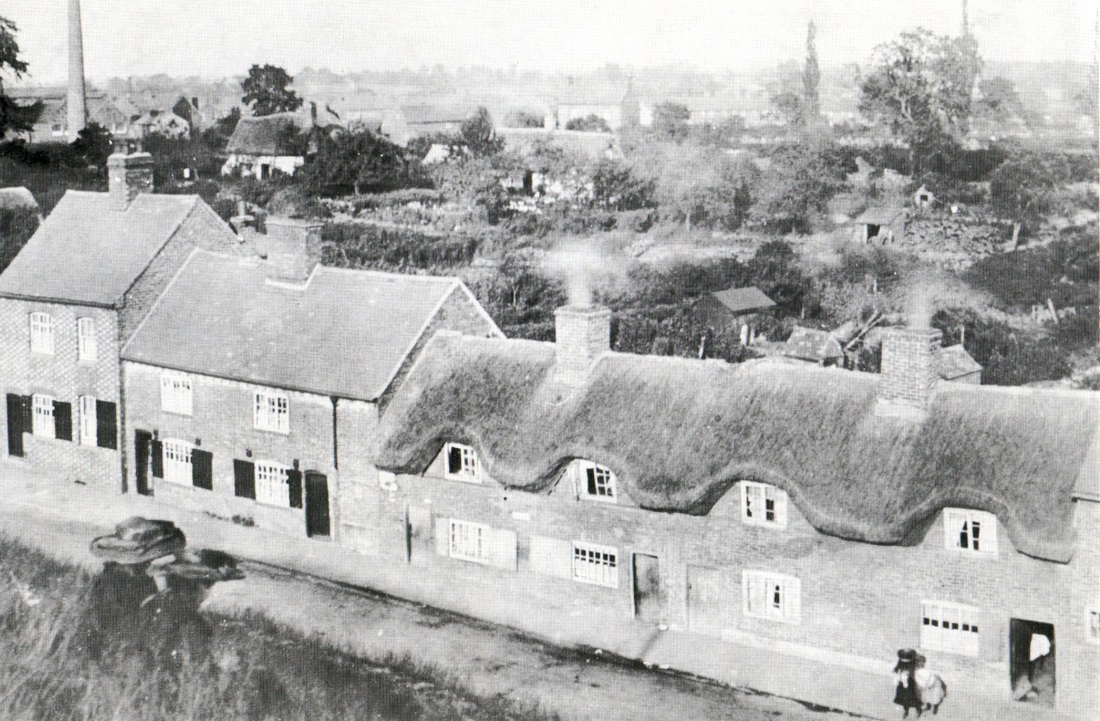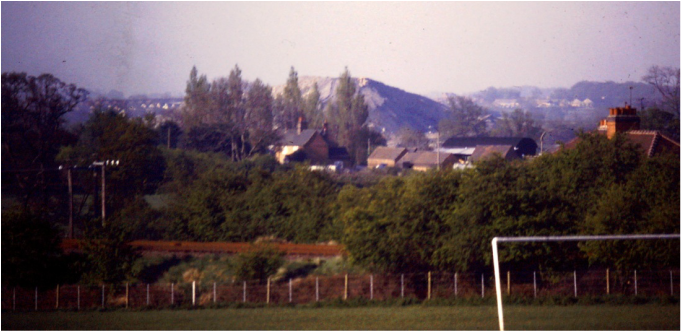Bedworth & Collycroft
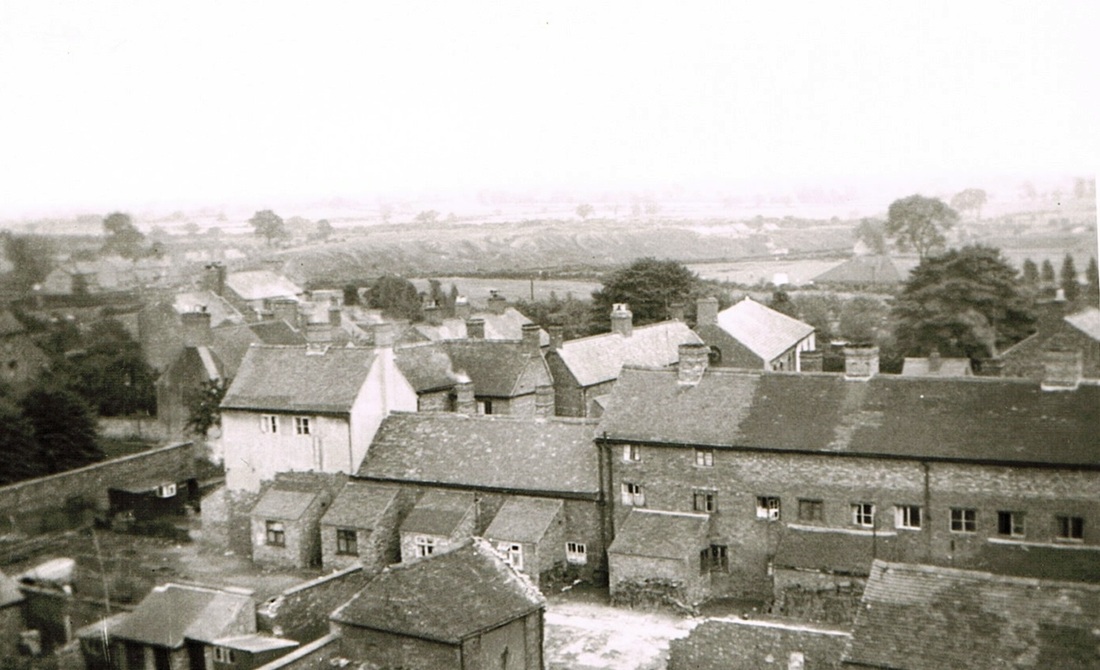
Looking south east from Tower House over Spitalfields to the waste banks of Coalpit fields. The Nuneaton-Coventry railway line runs in a cutting between them and the fields in the front of the waste banks. The cricket pavilion is visible between the two trees to the right. The Miners Welfare Park is in front of it. The last two houses in Rye Piece are on the left (Middle). Both of these were of the old three storey "top shop" type, with looms for weaving on the top floor. (Geoff Edmands Collection)
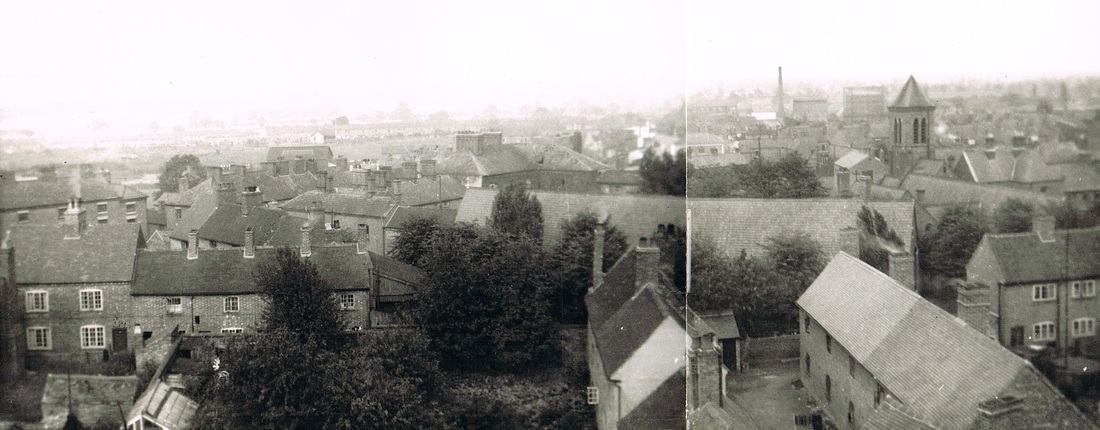
This is looking east over Spitalfields. King Street runs down the left hand side and the two imposing buildings on the right are the corner of Rye Piece (Marshall's Bakery). The half dozen buildings in the row in the foreground had been demolished by the end of the war. (In fact this area of empty ground on King Street always looked like a bomb site but the Luftwaffe had not demolished these houses.) (Geoff Edmands Collection)
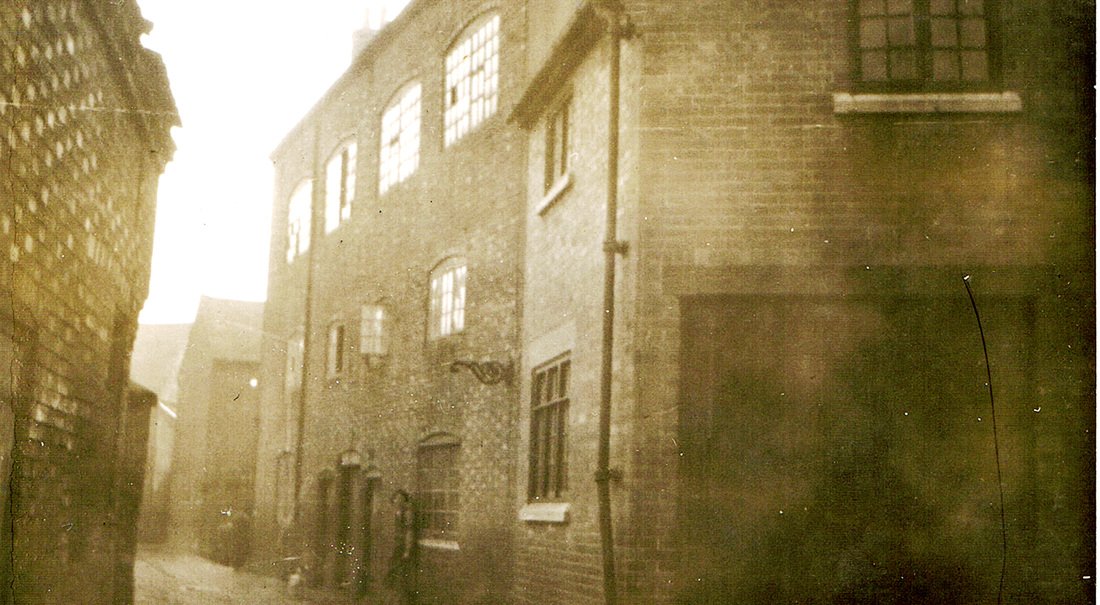
Grim old top shops (weaver's cottages) in 7 & 9 Spitalfields Bedworth on Sunday 17th February 1935. These belonged to the Edmands family and are just about to be demolished. Murial Edmands lurks in the alleyway. The building on the right with the big double doors belonged to the Co-Op. Commencement of the demolition of these old buildings must have started a few days after this picture was taken and was complete by 17th March 1935. (Geoff Edmands Collection)
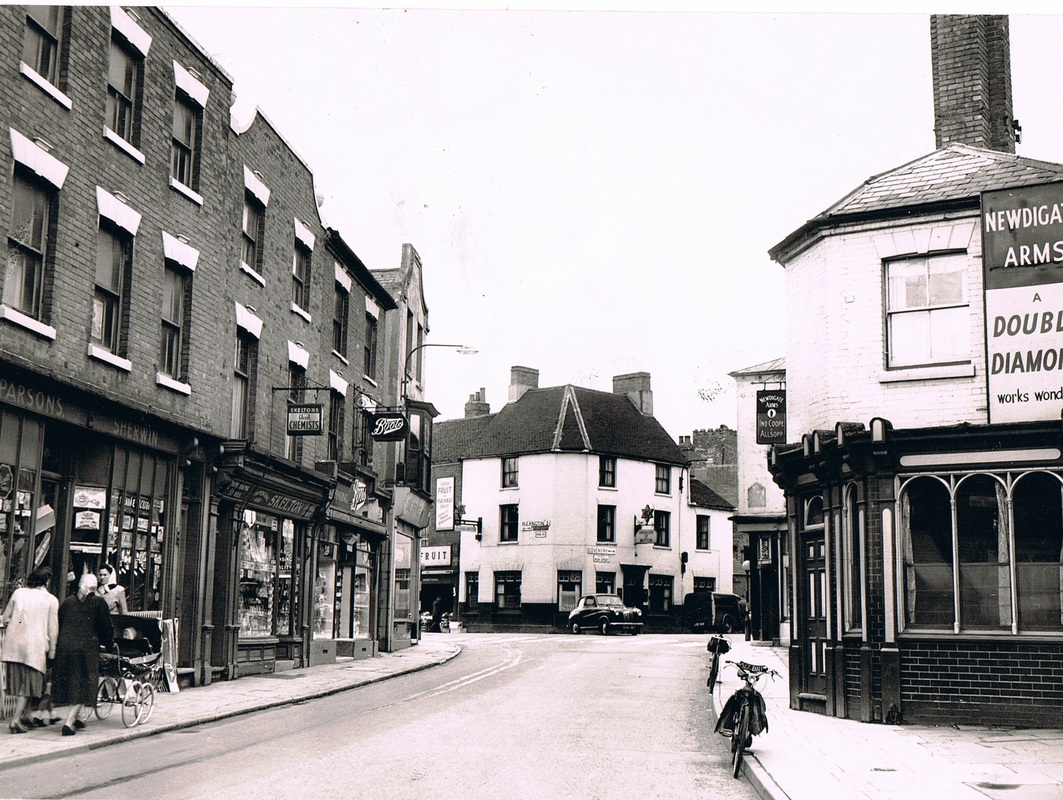
A wonderful view of part of the original Bedworth before the developers destroyed it. A joy to behold. Delightful buildings, elegant aesthetically pleasing and symmetrical. (Note the French style curves on the building on the left). Full of character. Everything immaculate and no litter. A far cry from the discordant "Soviet style" cheap nasty structures which replaced them to form the present town. You could prop your bikes against the kerb in those days without worry that they would be pinched and the contents of your bags rifled. On the left are Parsons & Sherwins, Ironmongers. (Linney & Horobin from 1830 to just before WW2). Skelton, the Chemist (previously Oates). The word Oates Chemist appeared in Roman style mosaic lettering in the shop step. Boots, Clarke's Shoe shop to the early - mid 1950's, then Warrington's grocery shop. (Note Mr. Warrington lived in the Grove eventually retiring to Rugby. On the other side of the road Worthington's grocery shop, with its fine gable, and Bunney's lay between Freeman Hardy & Willis and the Newdigate Arms. The Blue Chain Fruit and Vegetable shop at the top of King Street is visible.
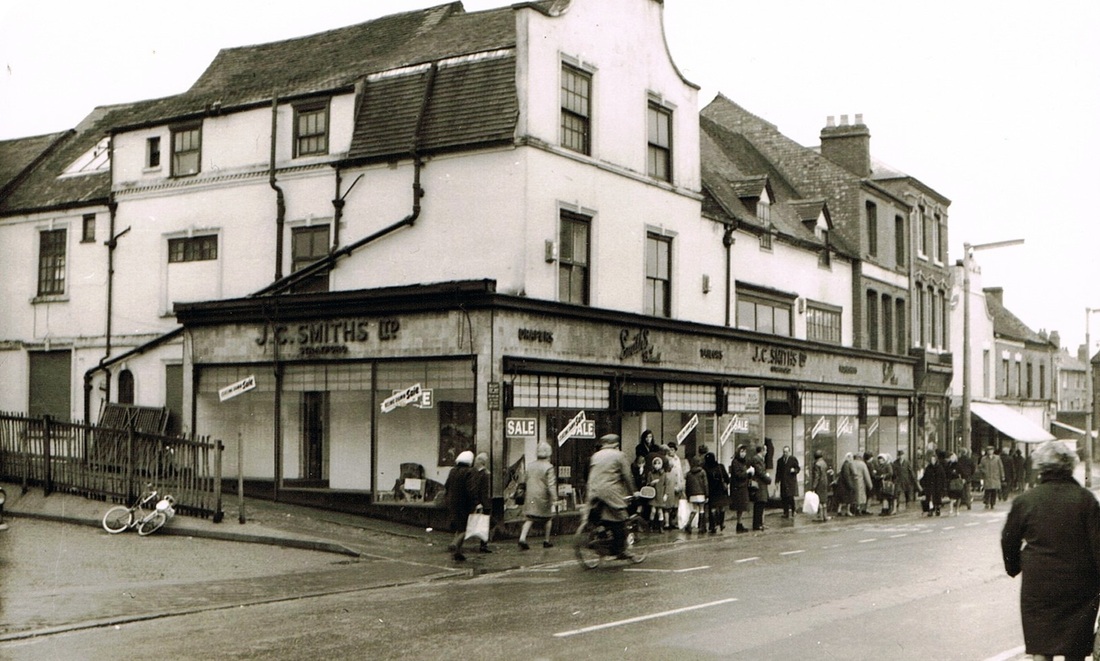
The familiar old J.C.Smith's towards the end of its life. A final clearance sale has taken place. Smith's was a hotch potch of old buildings cobbled together into a single store. Which made exploring the inside very interesting. Perhaps its best remembered feature was the system of payment. The Lamson vacuum tube apparatus was used. (An American invention). When a customer handed over the money it was put in a canister with a bill. The canister was placed in the tube and a vacuum sucked it up to a central cash office. (change was received in a similar fashion). It was all very complex and seems so dated today when people expect their change dispensed instantly. (Geoff Edmands)
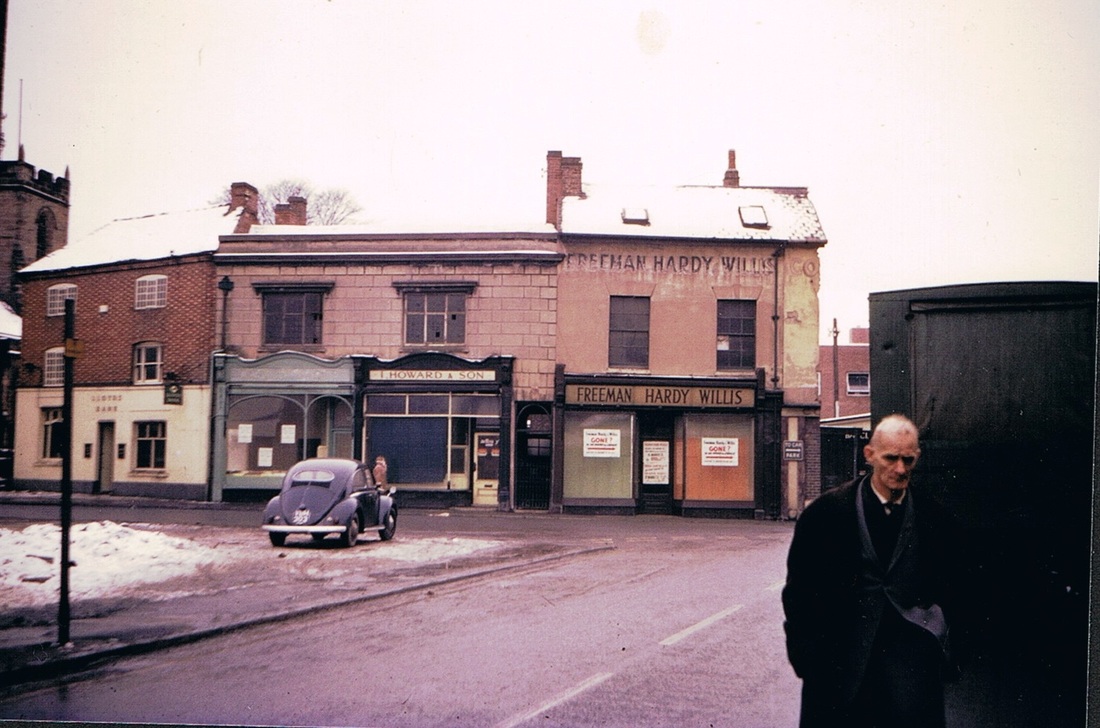
The reconstruction of Bedworth town centre is underway. The old properties in this view were about to be demolished. The Shoulder of Mutton pub has already gone, on the left corner as has the Newdigate Arms. Just round the corner from Lloyds - All Saints Row - how apt a name for that divine, sublime row of cottages - has already gone the Midland Bank will take its place. Freeman Hardy & Willis which was Bedworth's leading shoe shop for many years, Howard & sons sold cooked meats. The proprietor lived at the Limes in Park Road. Gutteridge the solicitor had his offices over the top of the shop. 28th January 1968. (Geoff Edmands)
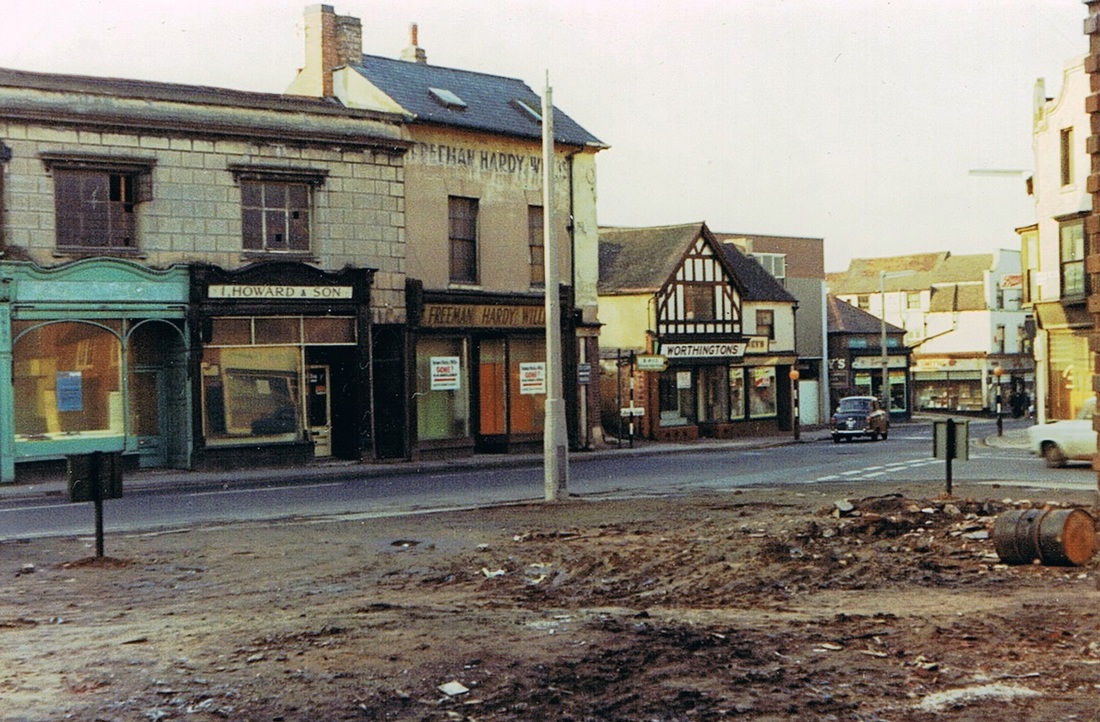
Another angle of High Street Bedworth during the demolition of the town centre 28th January 1968. J.C.Smith's can be seen between Bunney's tiny shop far right of centre and the buildings on the extreme right of the picture. From the site of the demolished "Shoulder of Mutton" public house (Geoff Edmands)
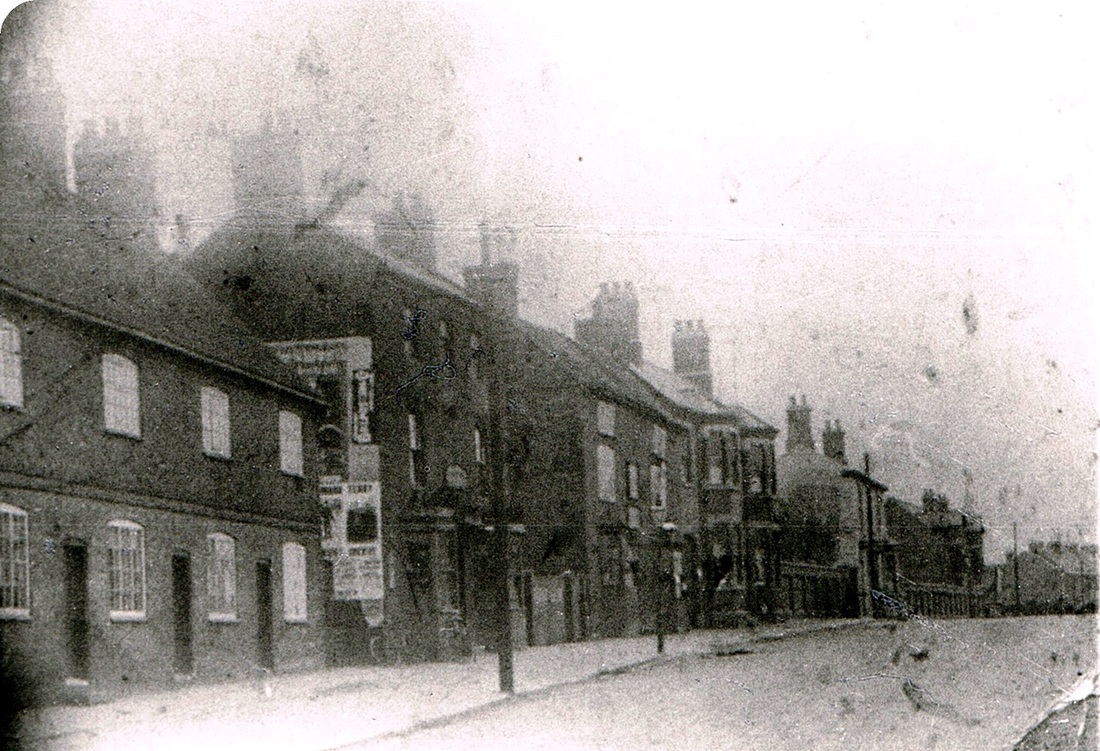
A 1907 view by Ernest Ratledge of Rugby. This is the beginning of Leicester Road (Leicester Street lies behind the photographer). There are four cottages on the left then the "Bear and Ragged Staff" public house followed by the "Mount Pleasant" and beyond that the house of Mr. Pickering (Ingleby) who ran the hat factory at the top of Leicester Street (about 50 yards down from the cottages on the left). The hat factory was taken over by his son in 1929 and closed in 1953. It subsequently became Clear Hooters Ltd. There were some coal pits at the back of the Mount Pleasant pub, sunk by William Thomas in the early 1840's and a tramway led from them down to Charity Dock on the Coventry Canal. When the LNWR planned their new line between Nuneaton and Coventry (in 1848) a branch line was authorised to Mount Pleasant Colliery and it is believed to have run behind the houses on Leicester Road. The pit was apparently not working in 1854 though. It is listed in an 1860 directory, but it seems to have closed soon after that. The "Mount Pleasant" pub was owned by Hunt Edmunds the Banbury brewer. A steam lorry is remembered backing through the wooden gates to drop barrels into the cellar in the 1950's.
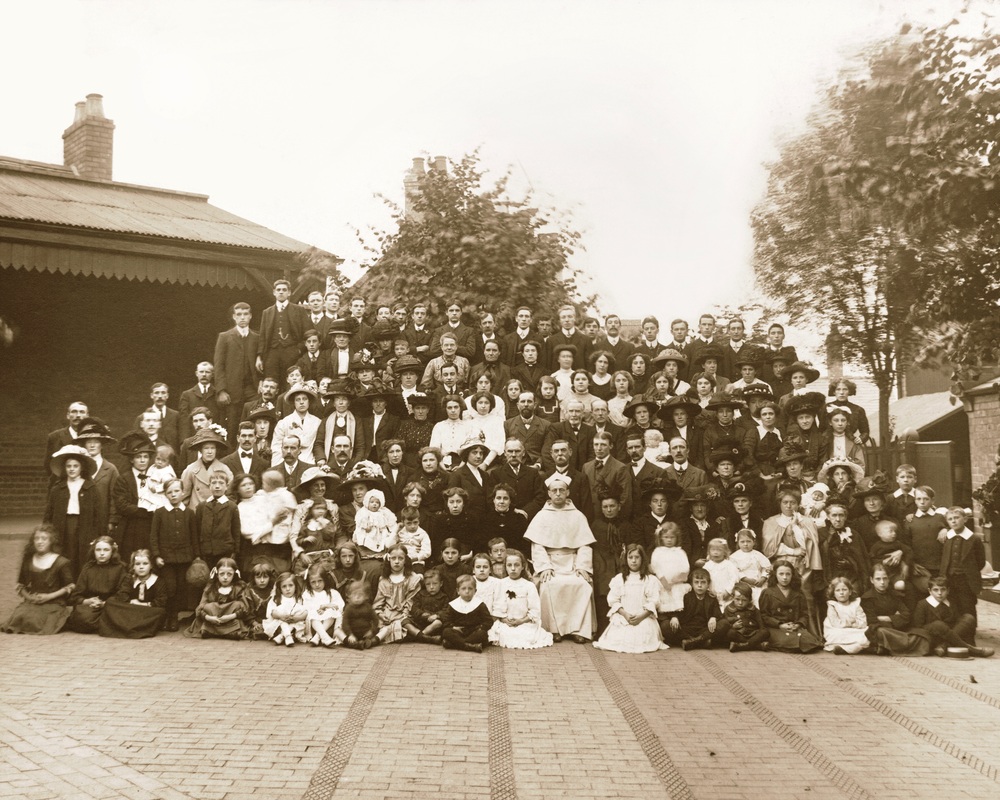
The congregation of St. Francis Church, Bedworth assemble for their photo to be taken 1911/12. St. Peter's Cottages to the right. The priest is Father Francis Laborde. 2nd lady to his left is Edith Ann Cosgrave (formerly Bull). Can anyone identify the other members of the congregation seen here, or the occasion. (Alison Moore)
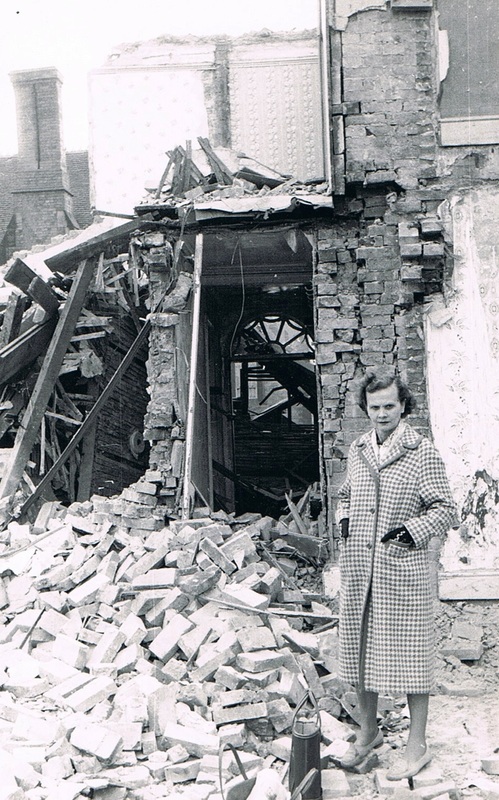
The Edmands family owned Tower House for over one hundred years but sometime in the 1940's Geoff, and his sisters Muriel and Dorothy moved to 180 Coventry Road, Nuneaton. However, they took an interest in the demolition of their old home coming back to be photographed with the ruins for posterity. Here is Dorothy in what used to be the kitchen area looking down the hall to the distinctive front door. 30th April 1963. (Geoff Edmands Nr. 2259)
